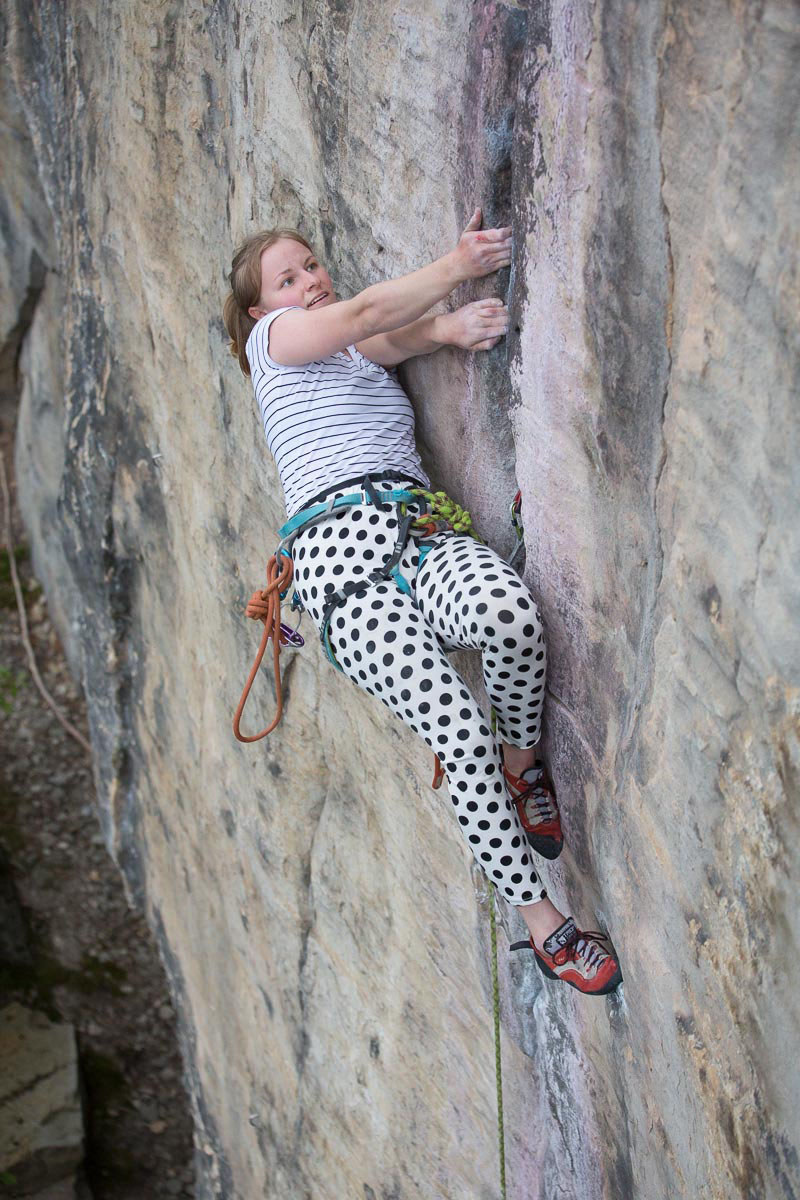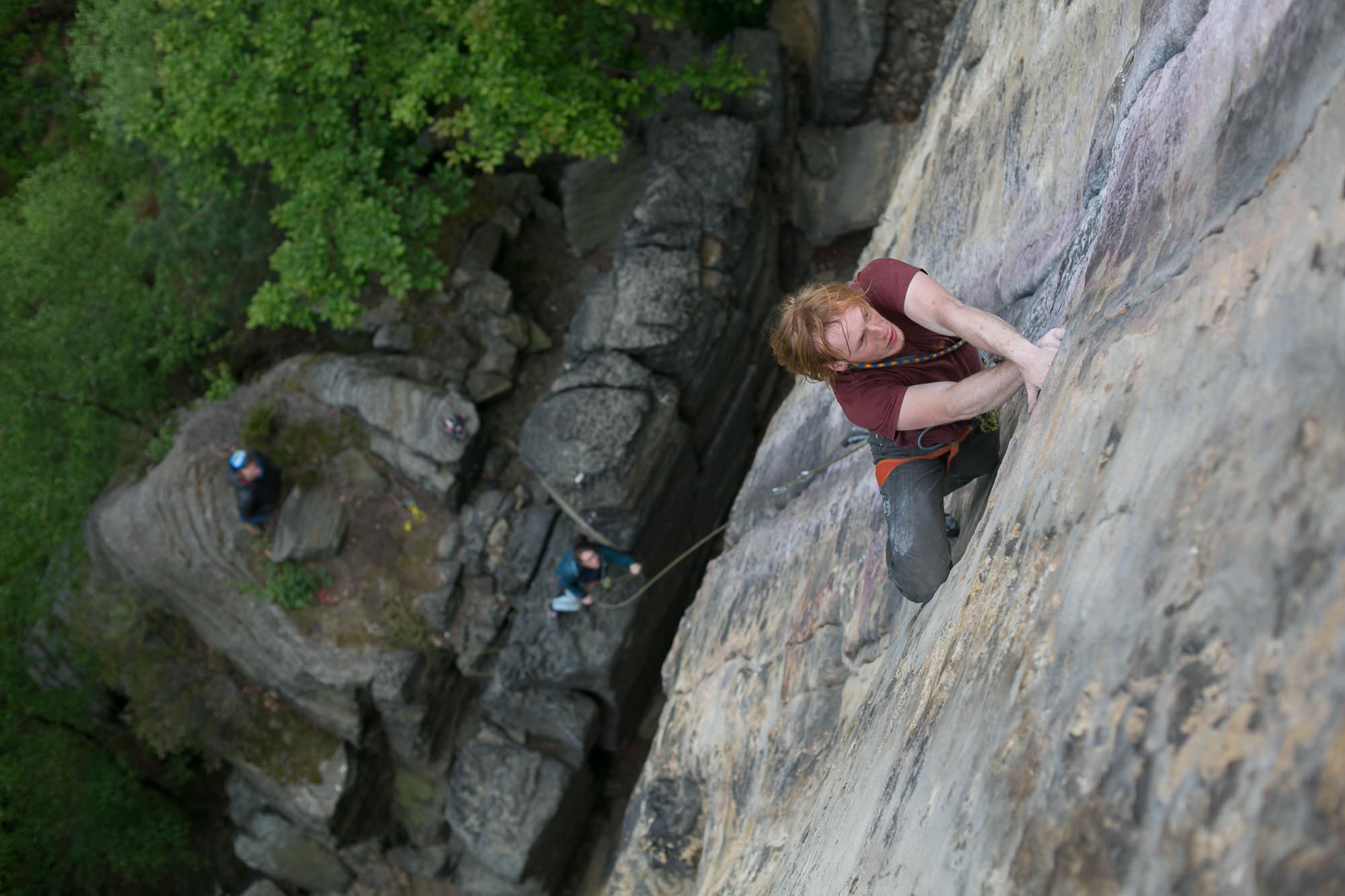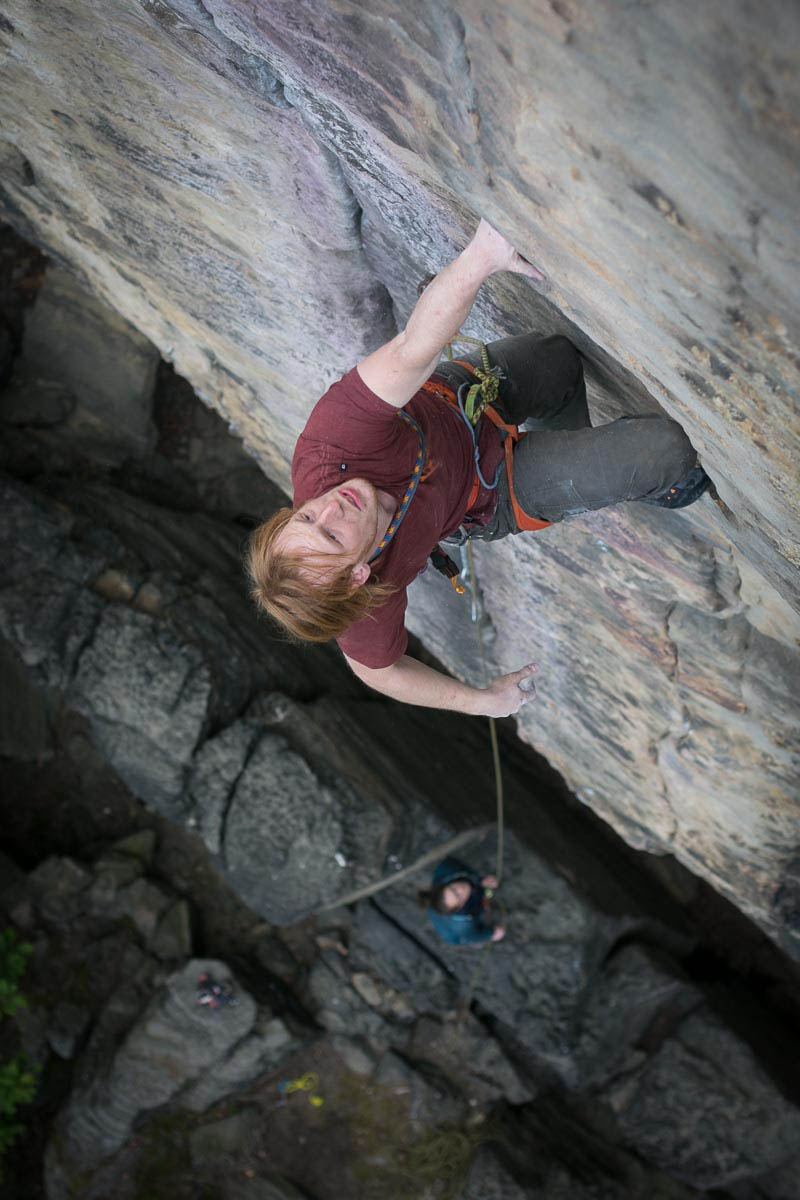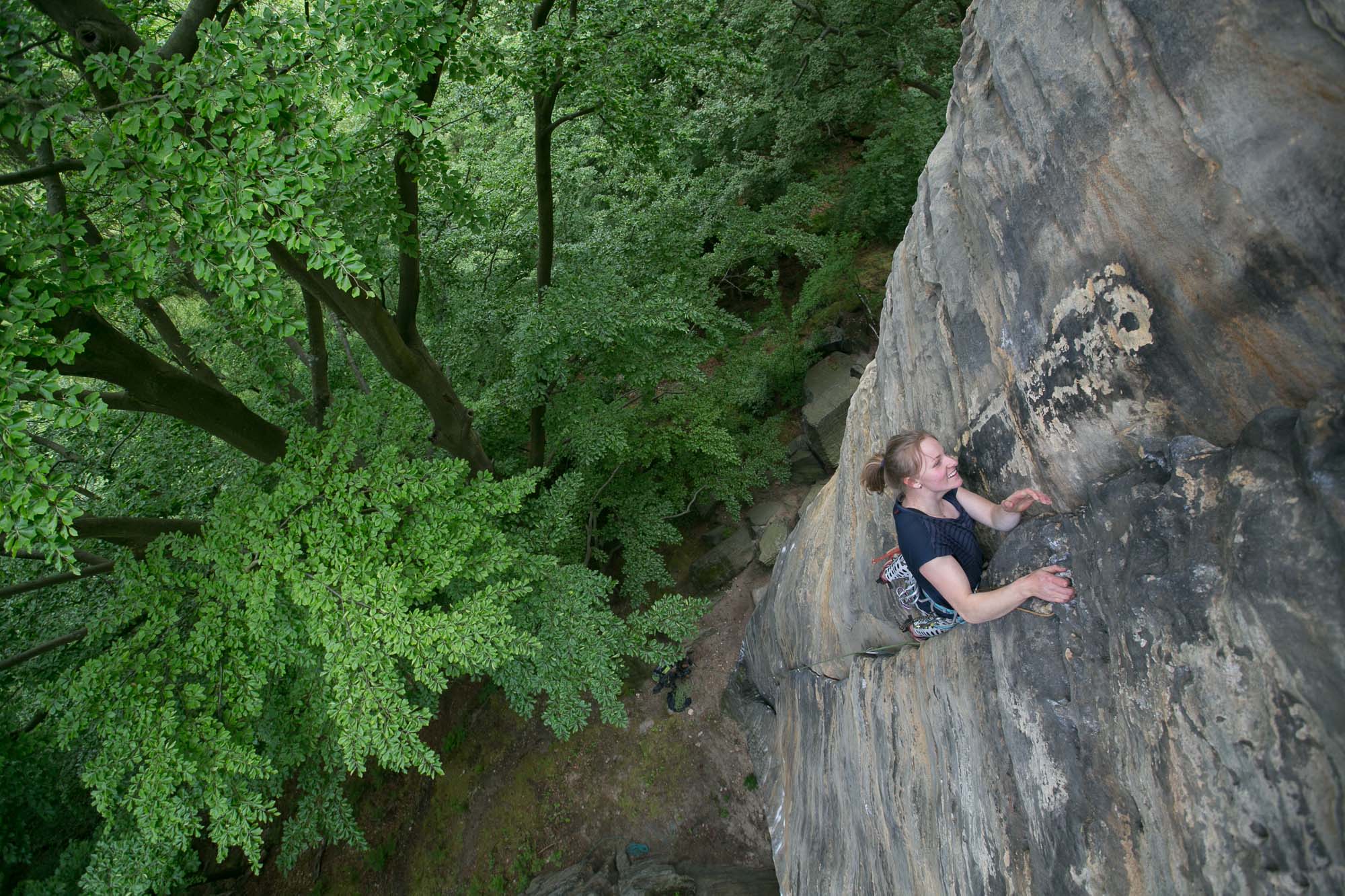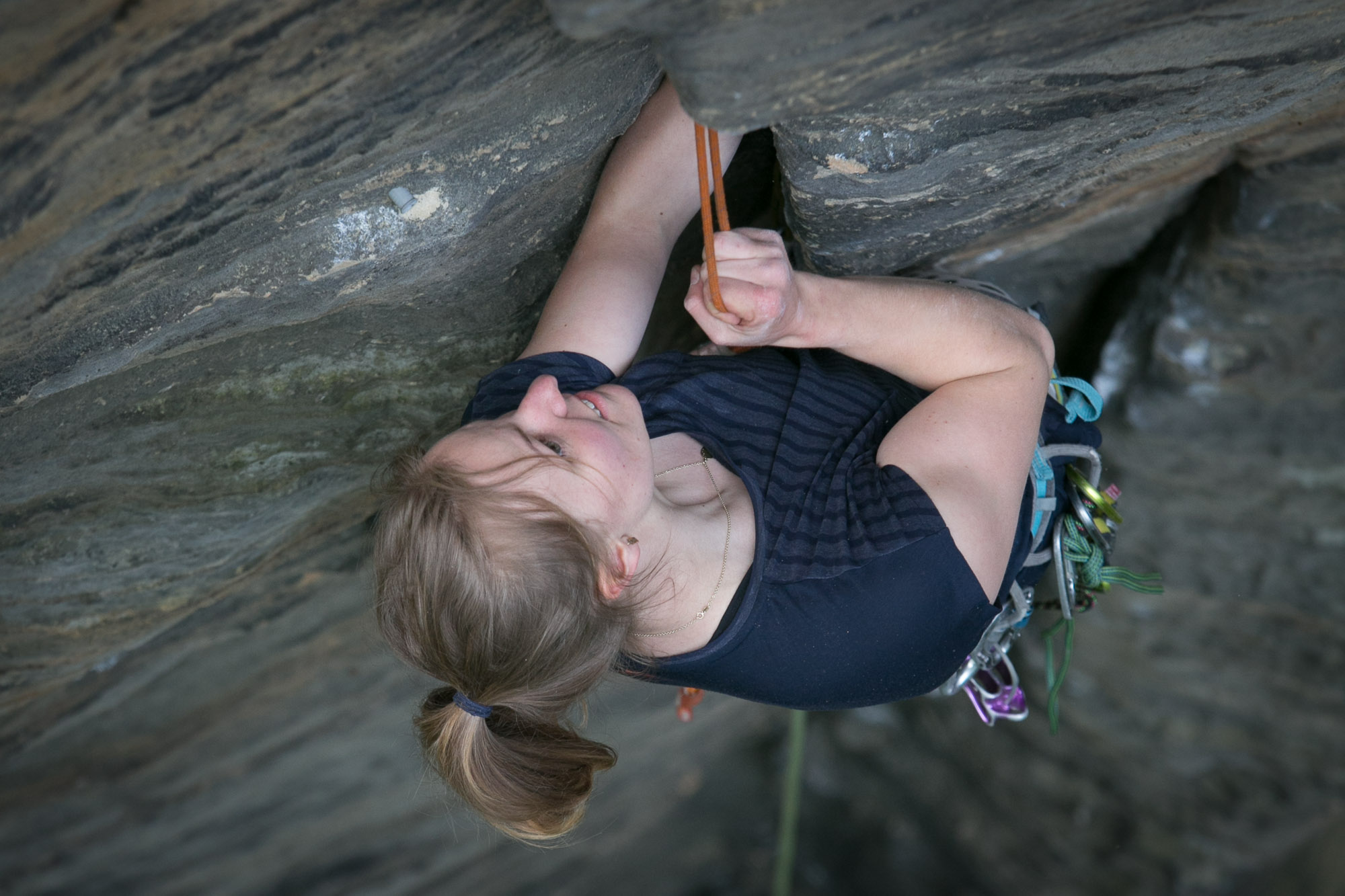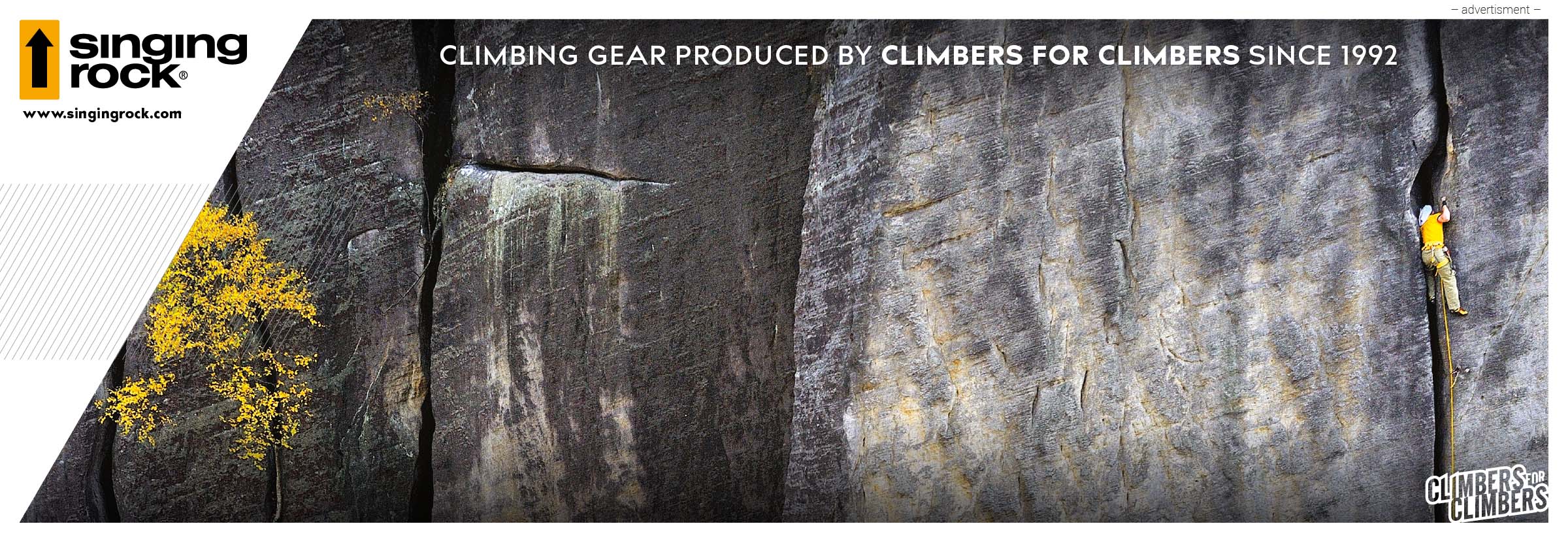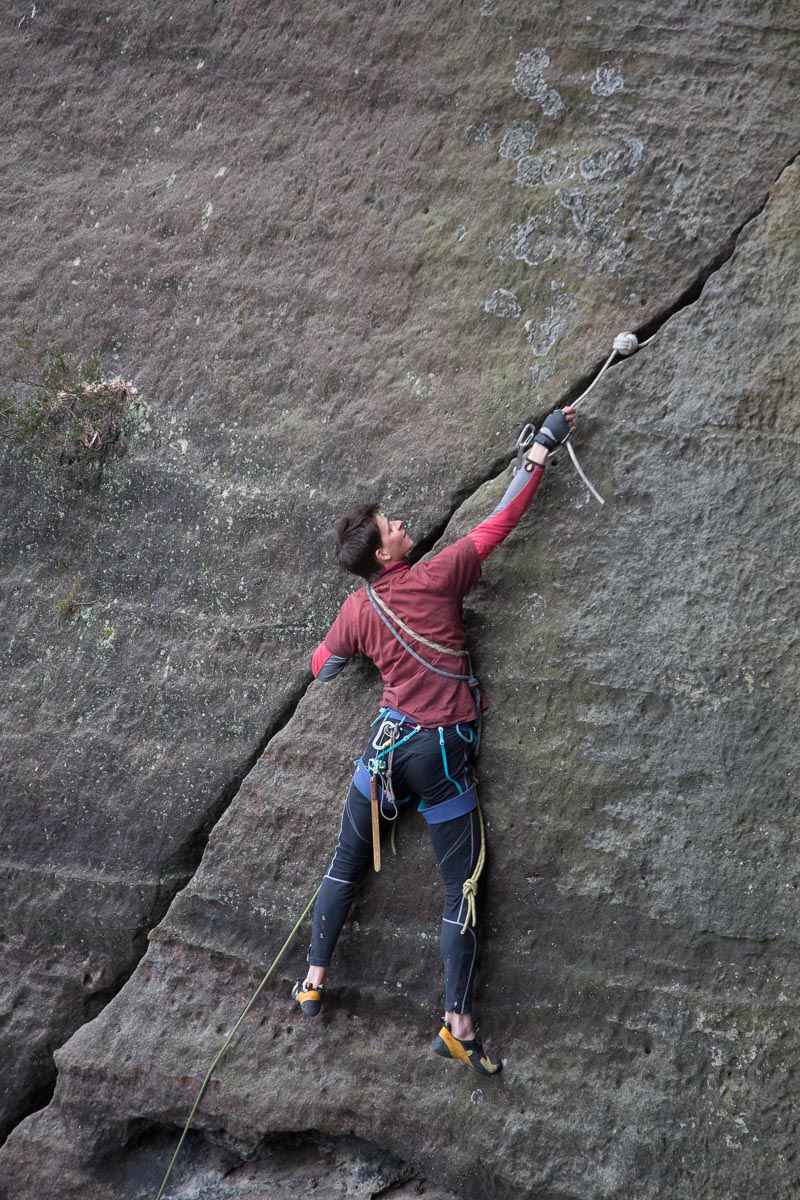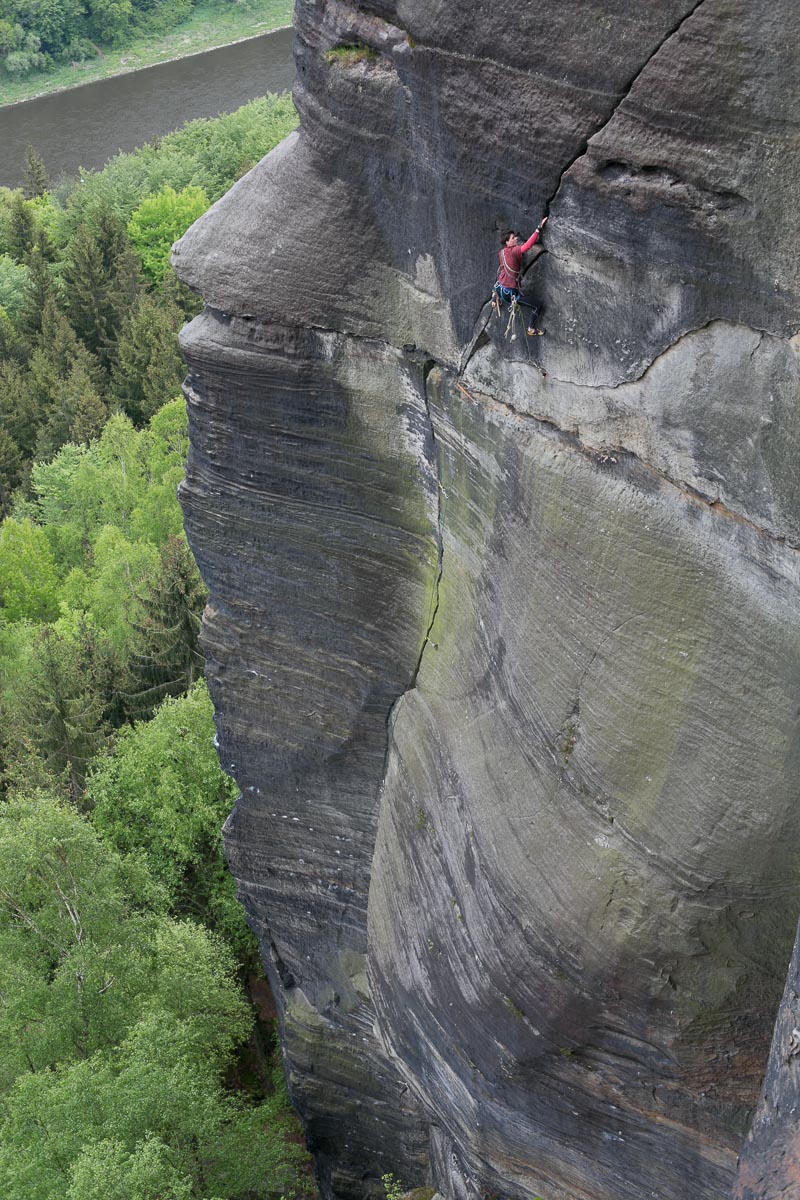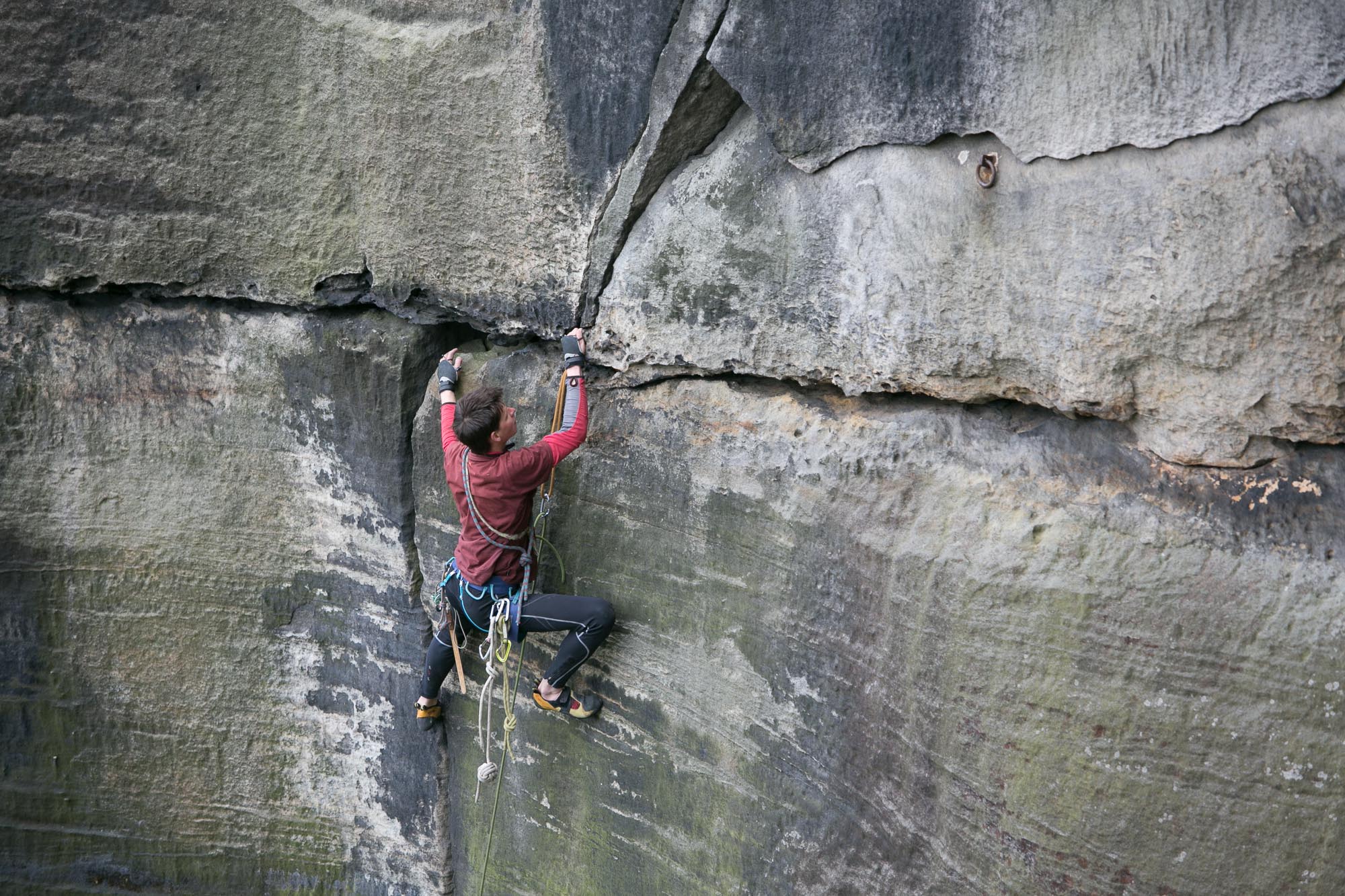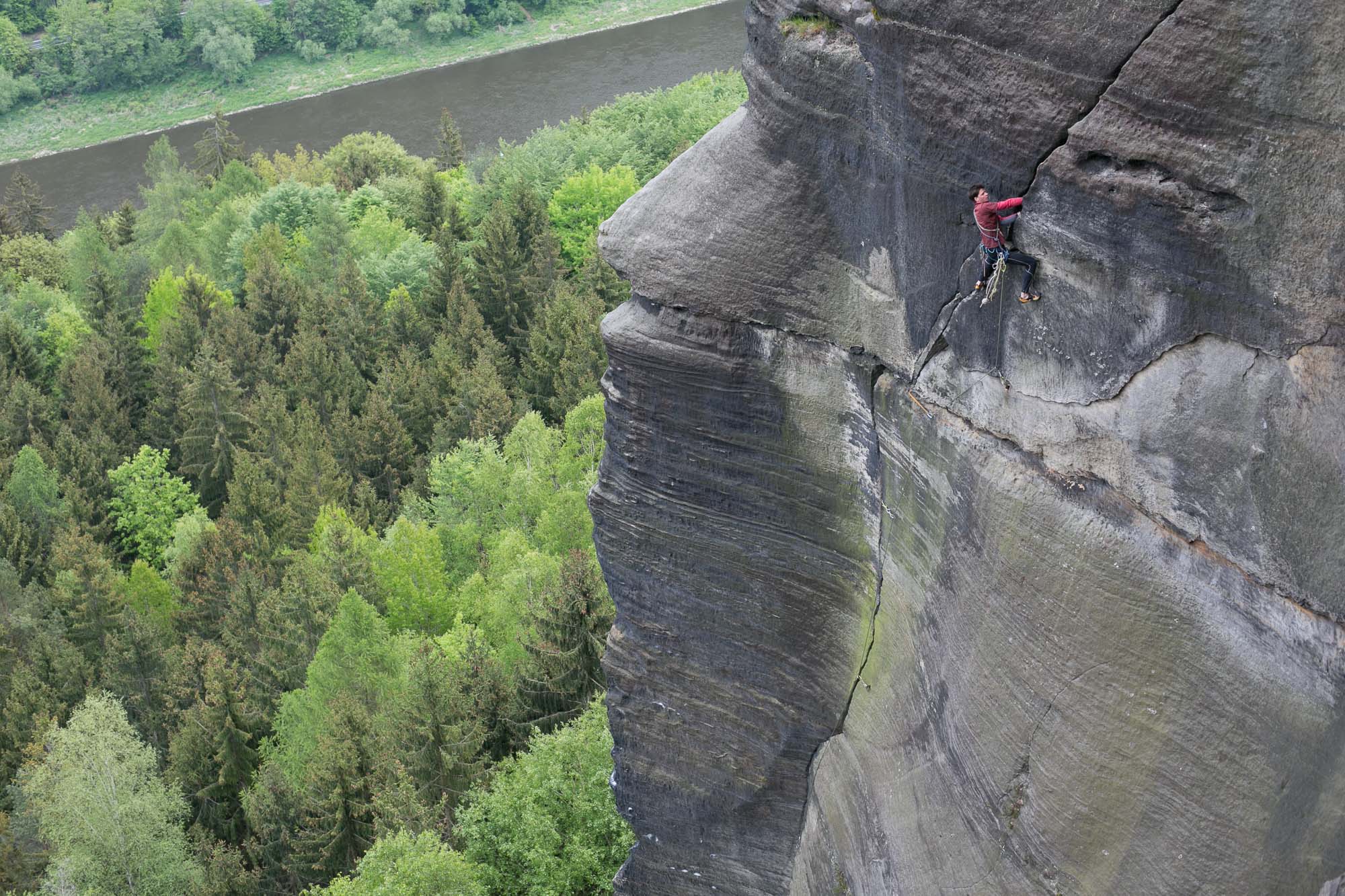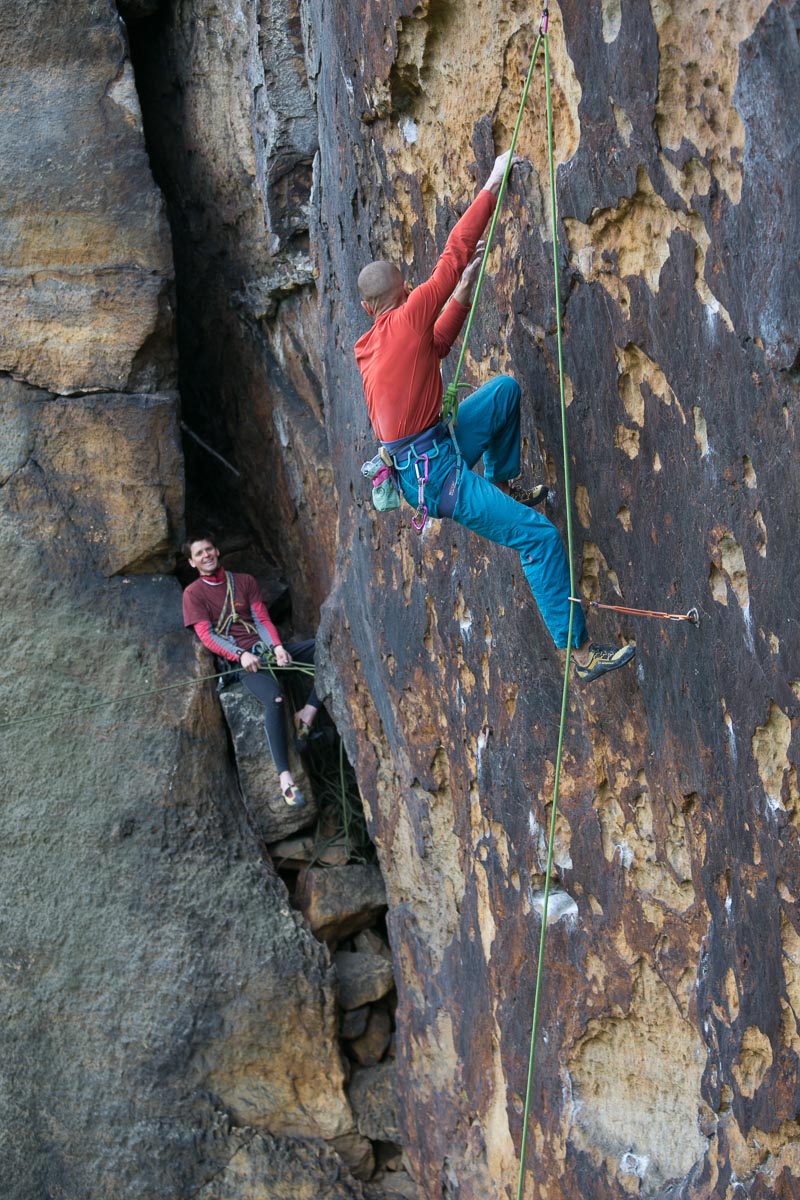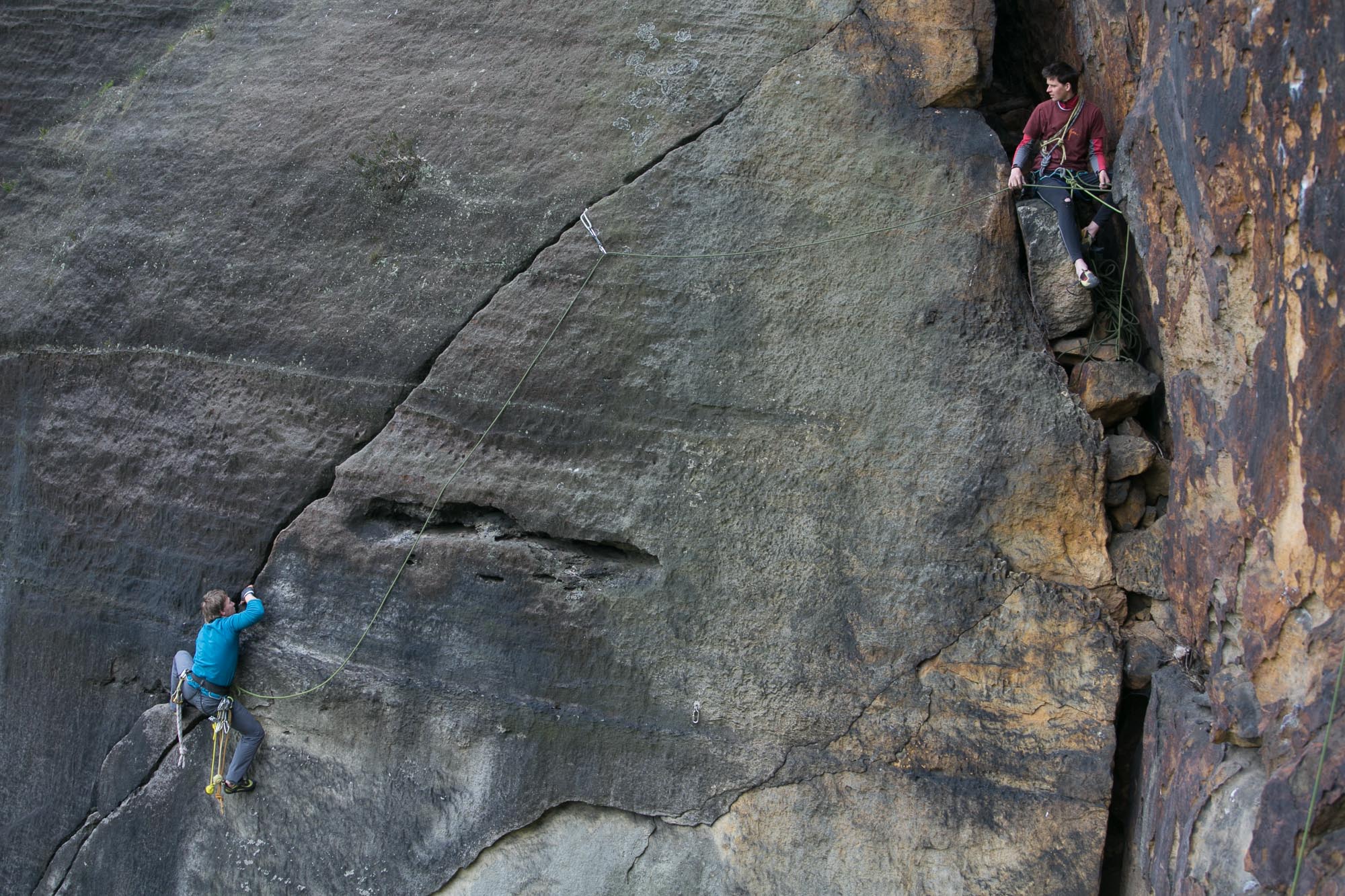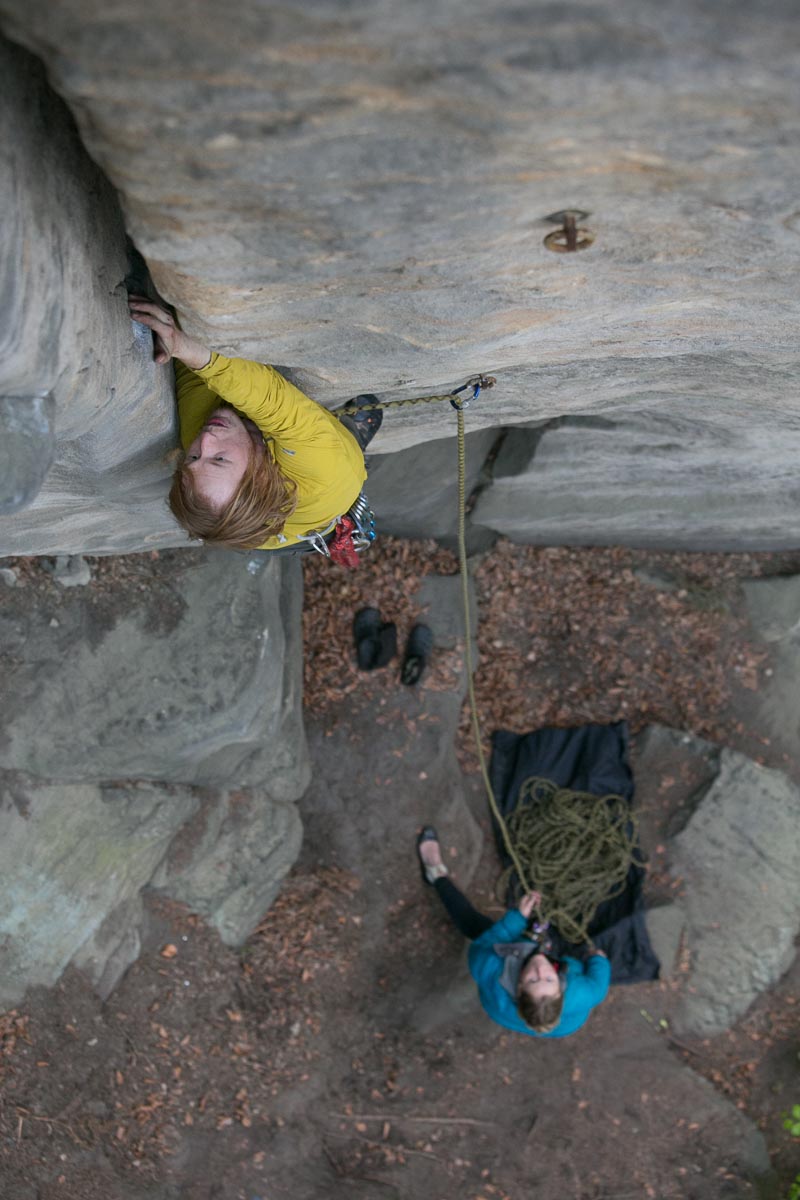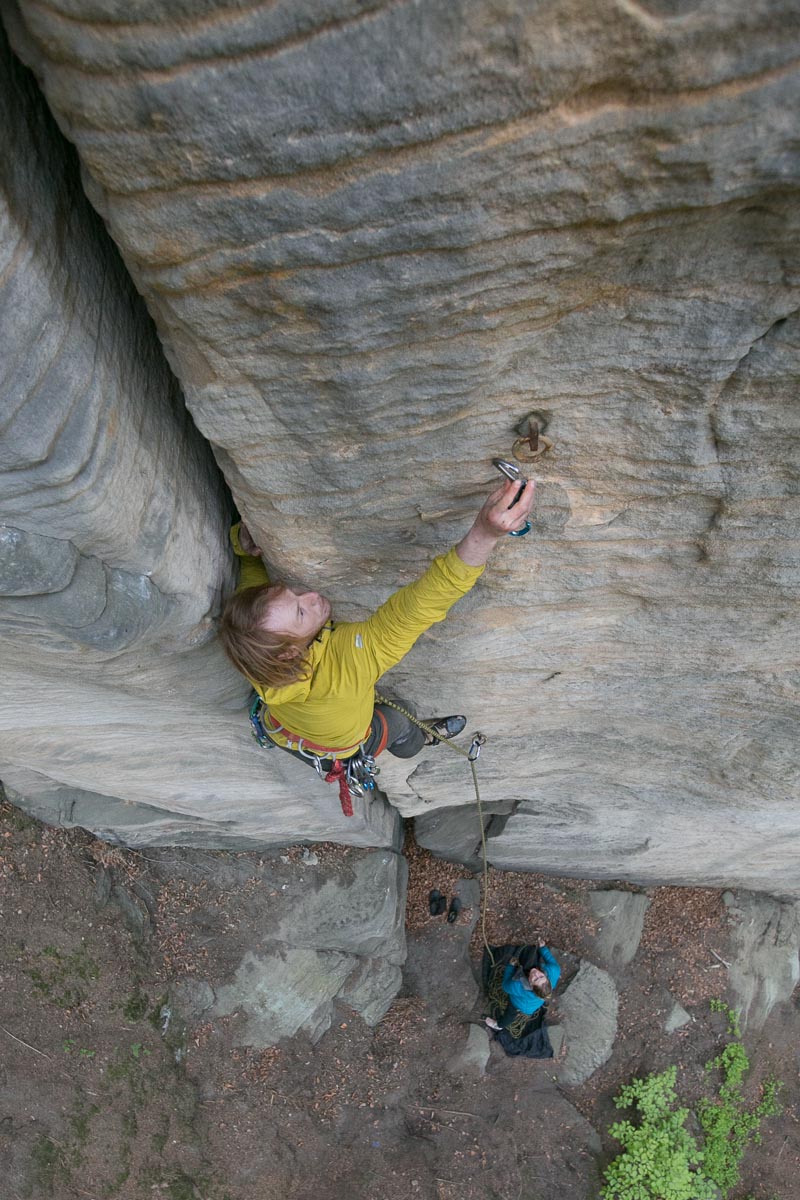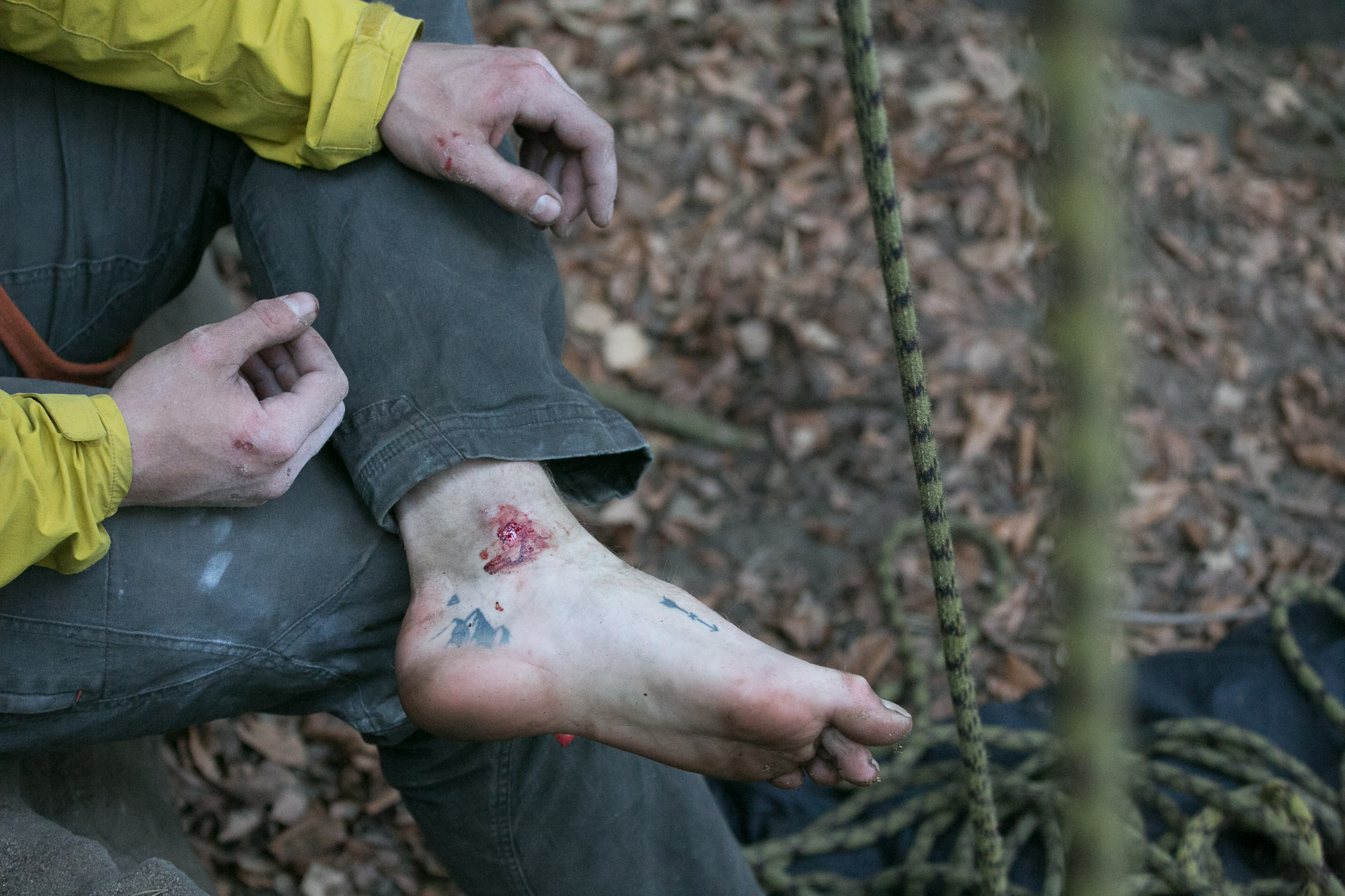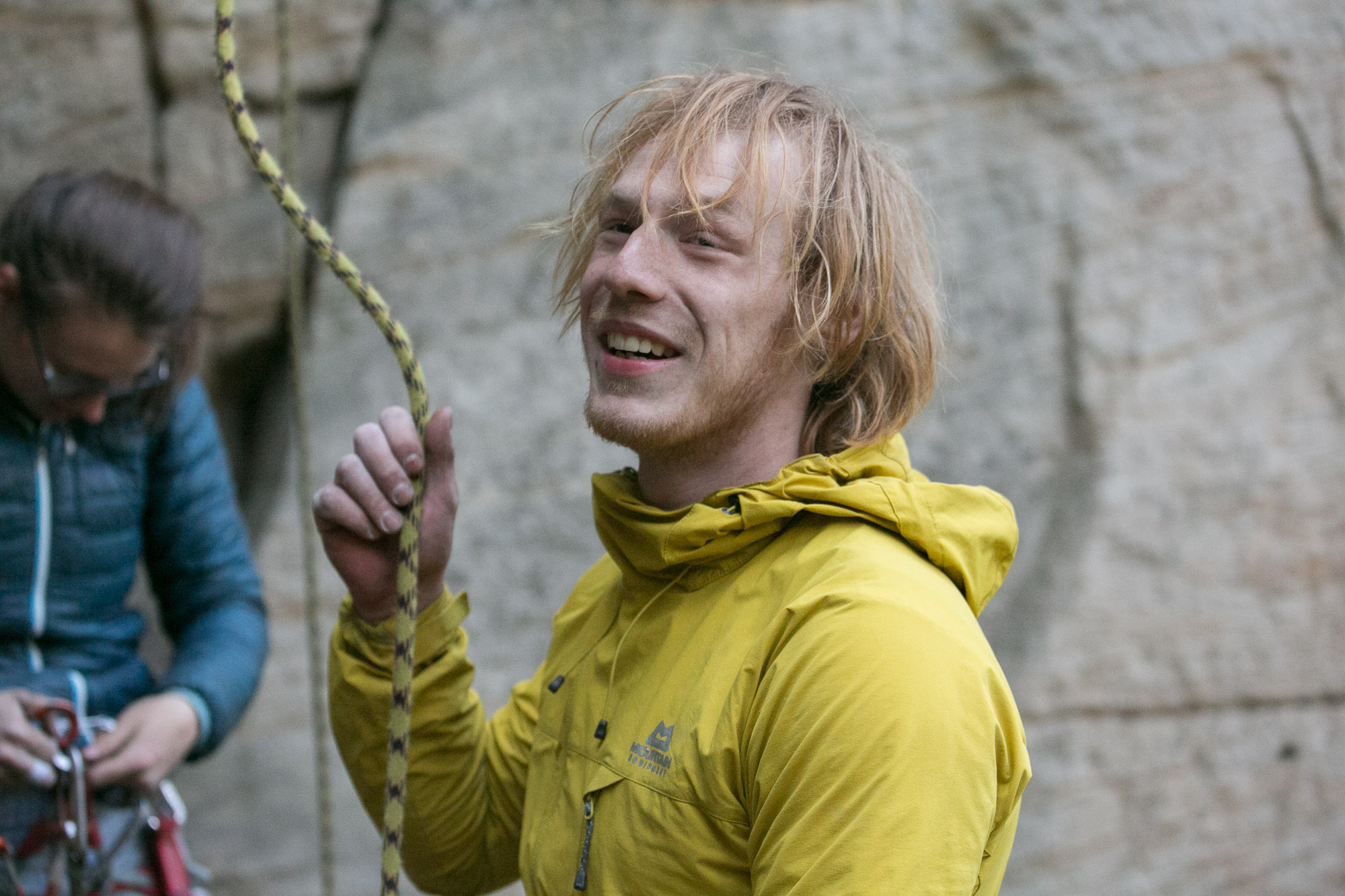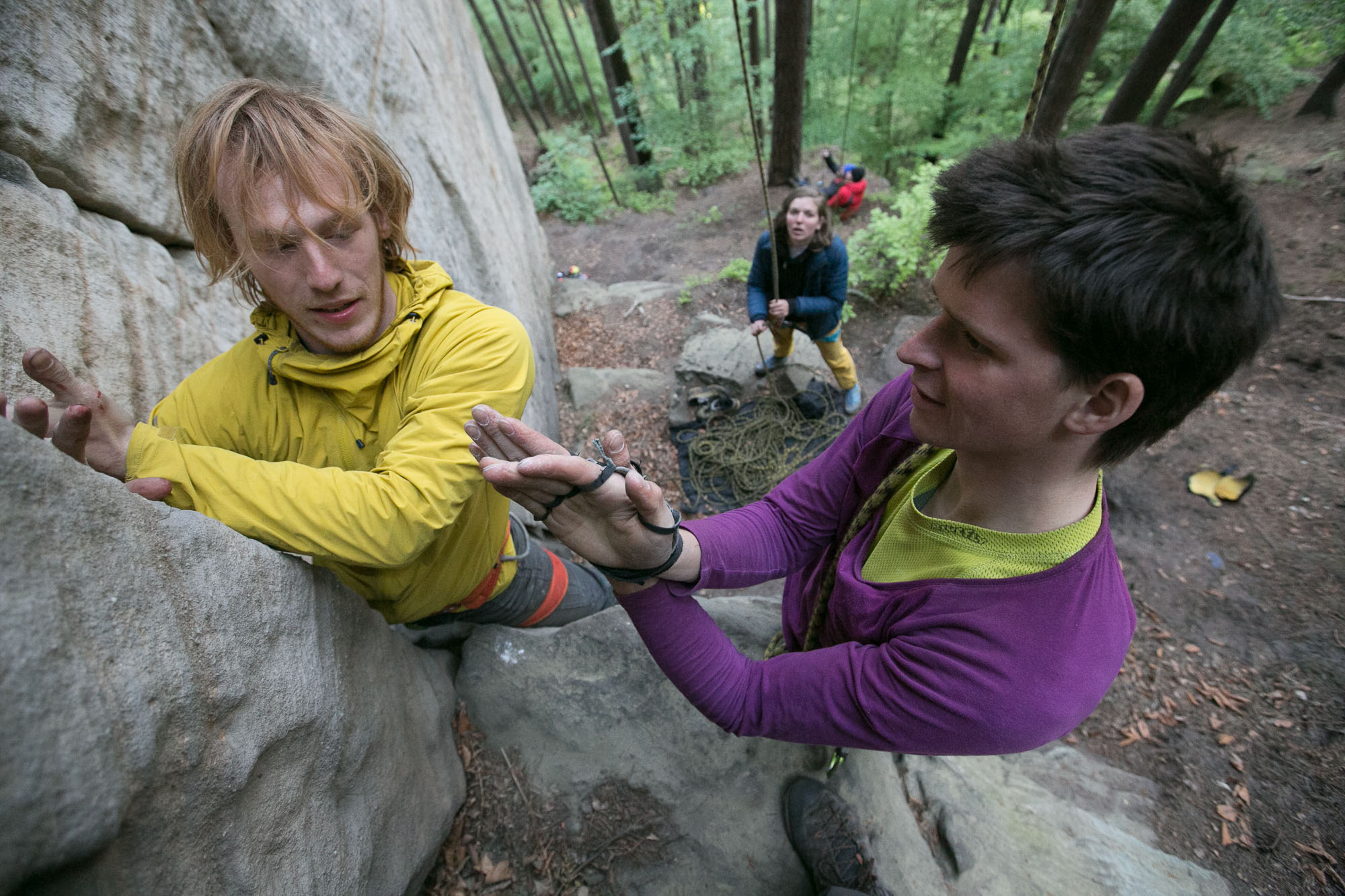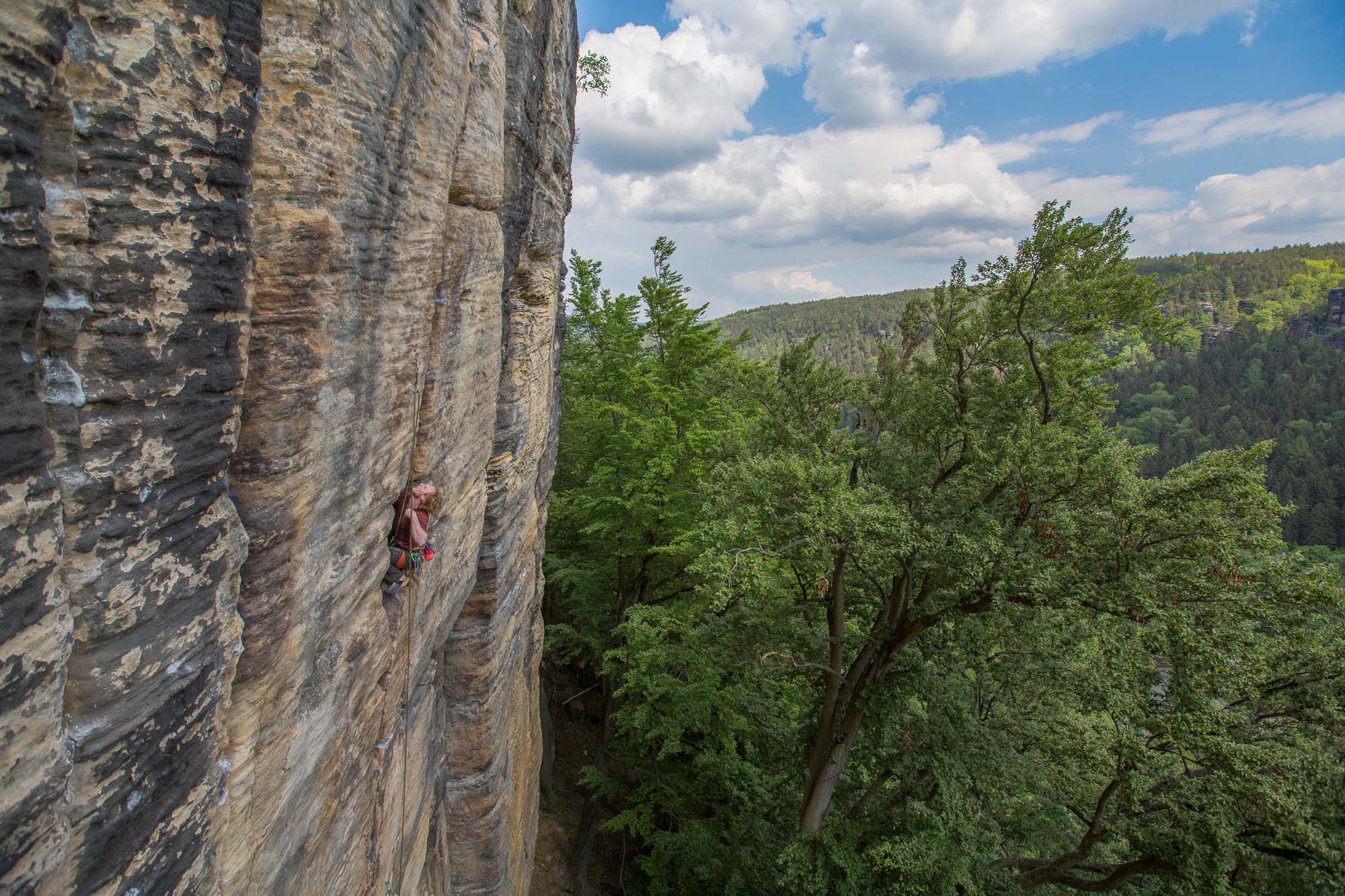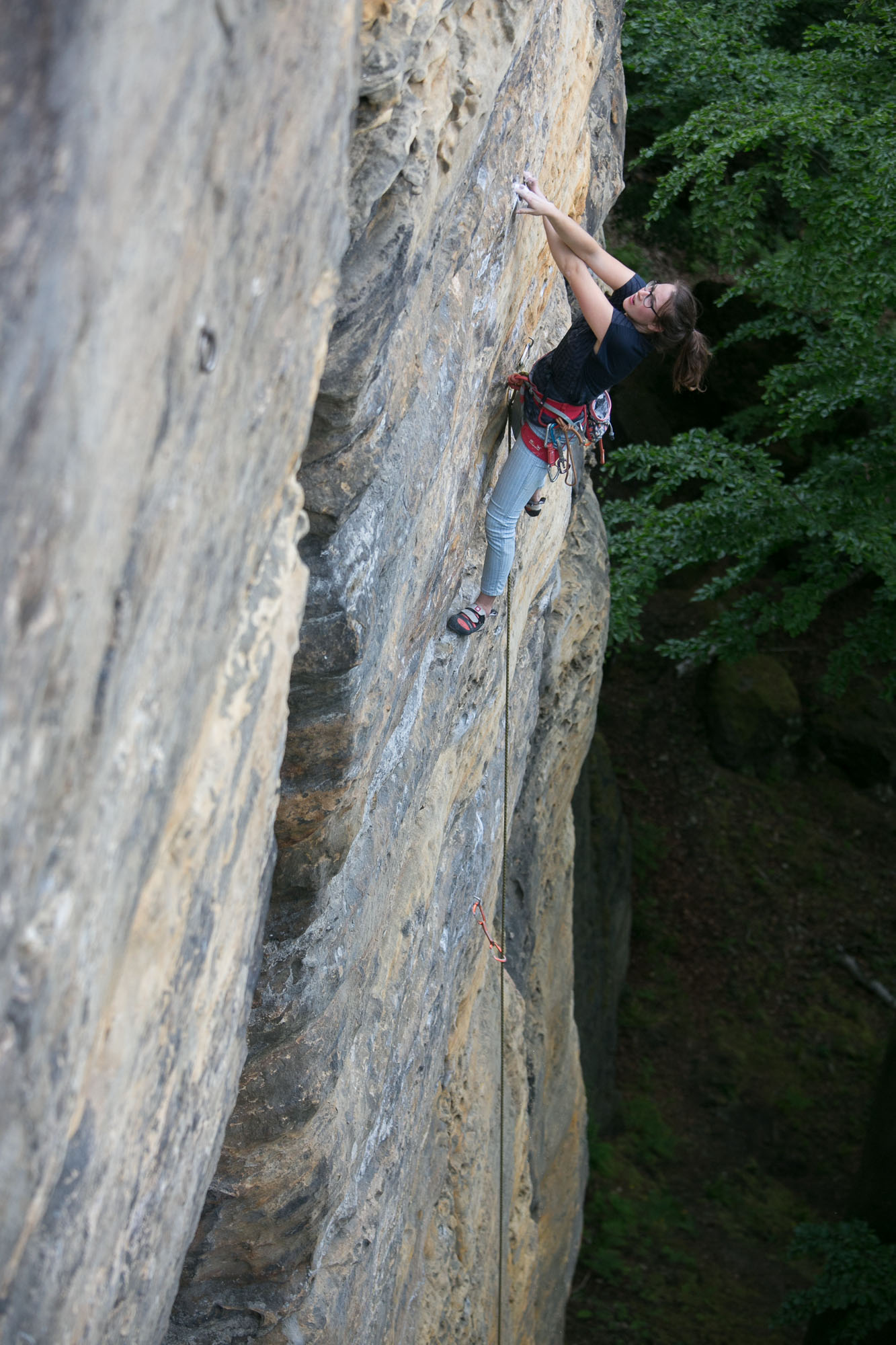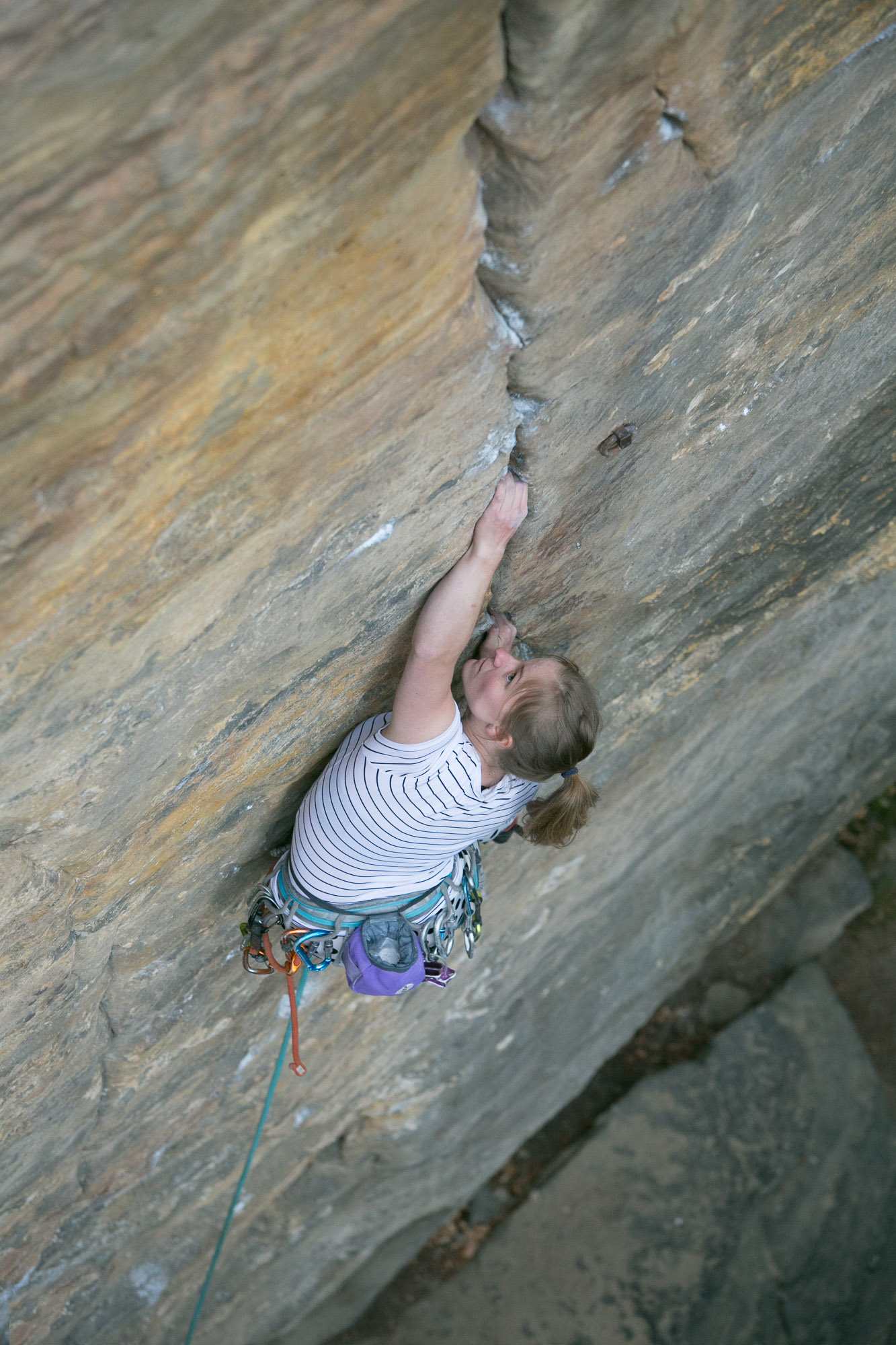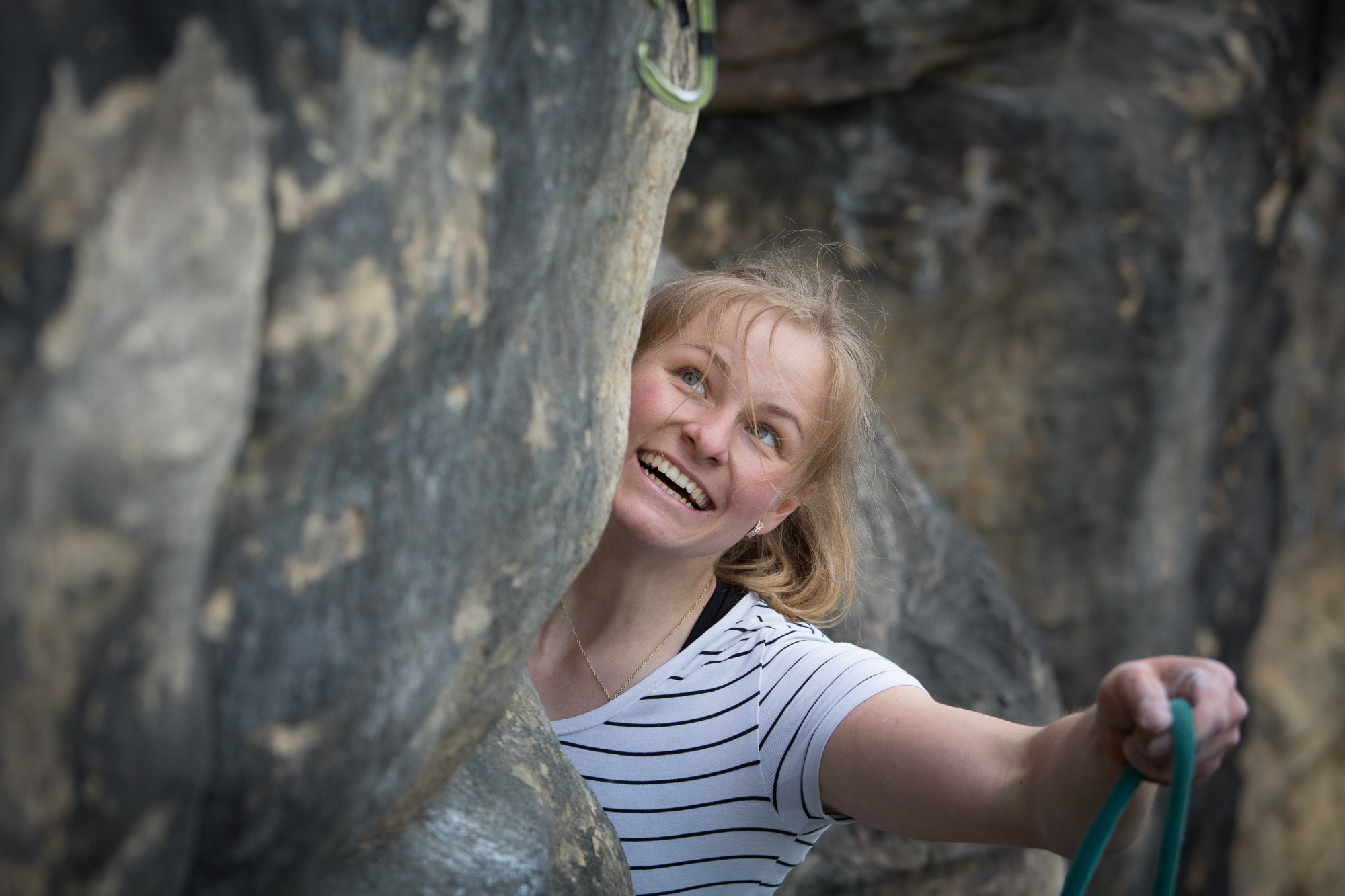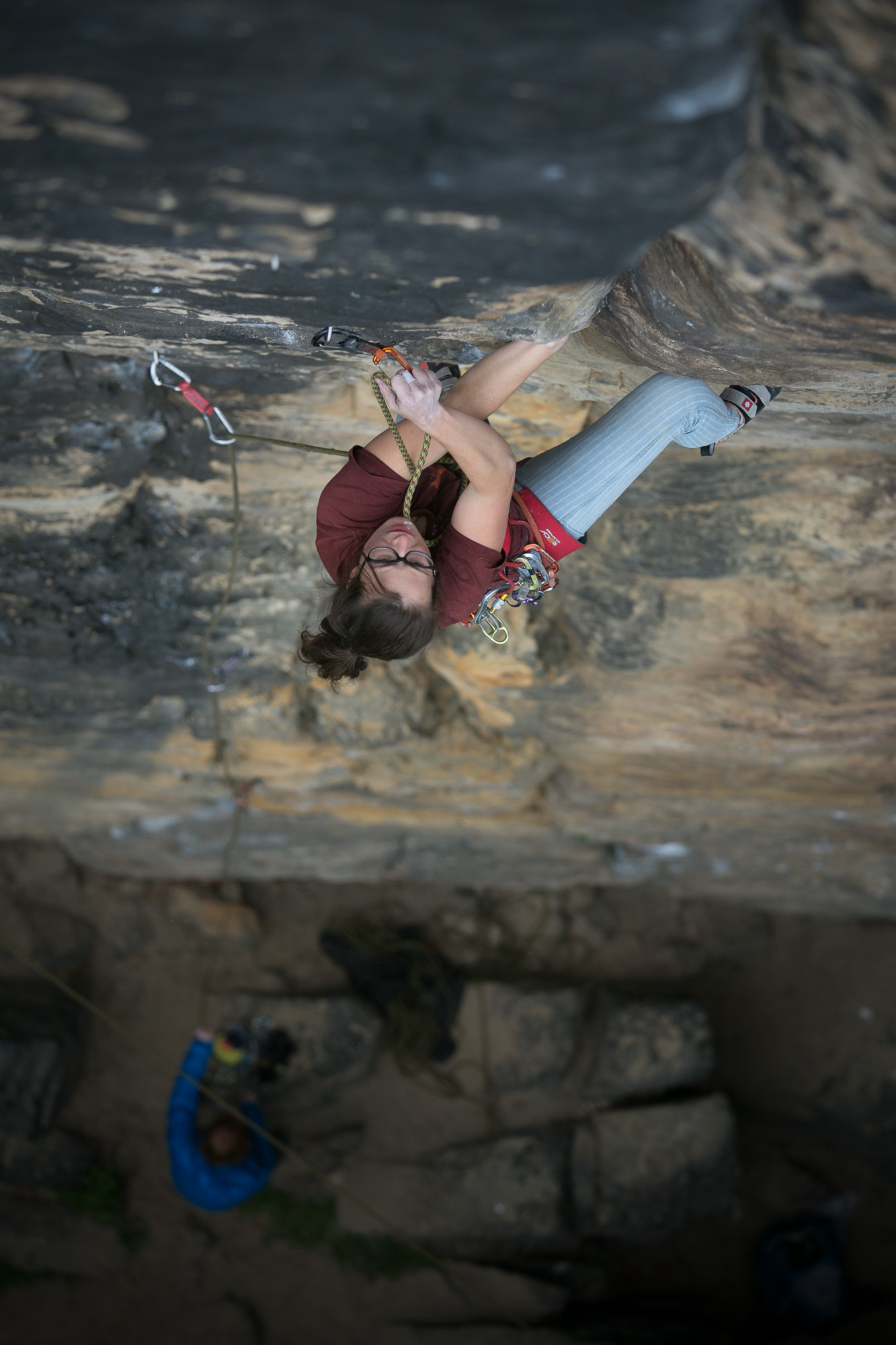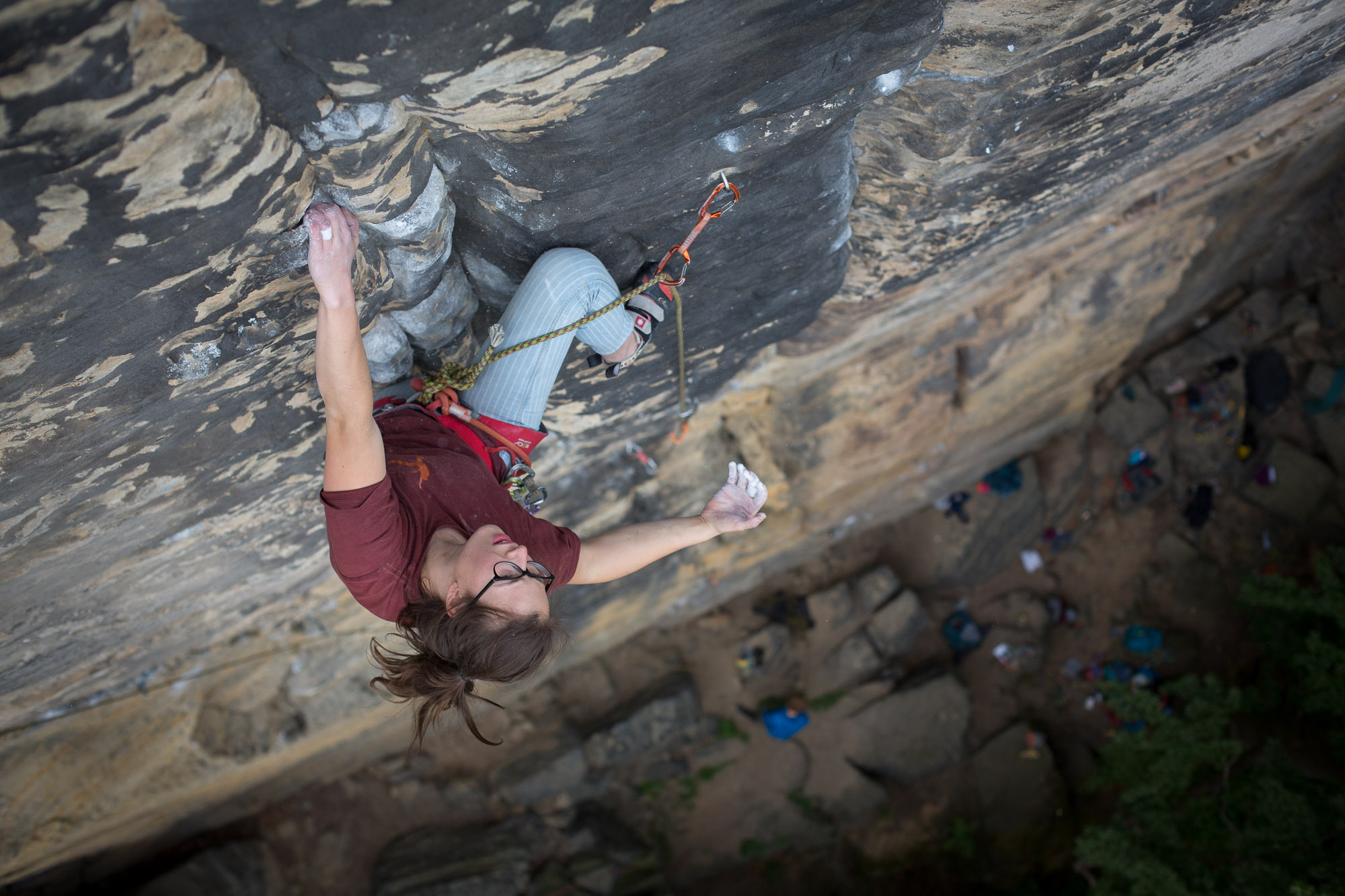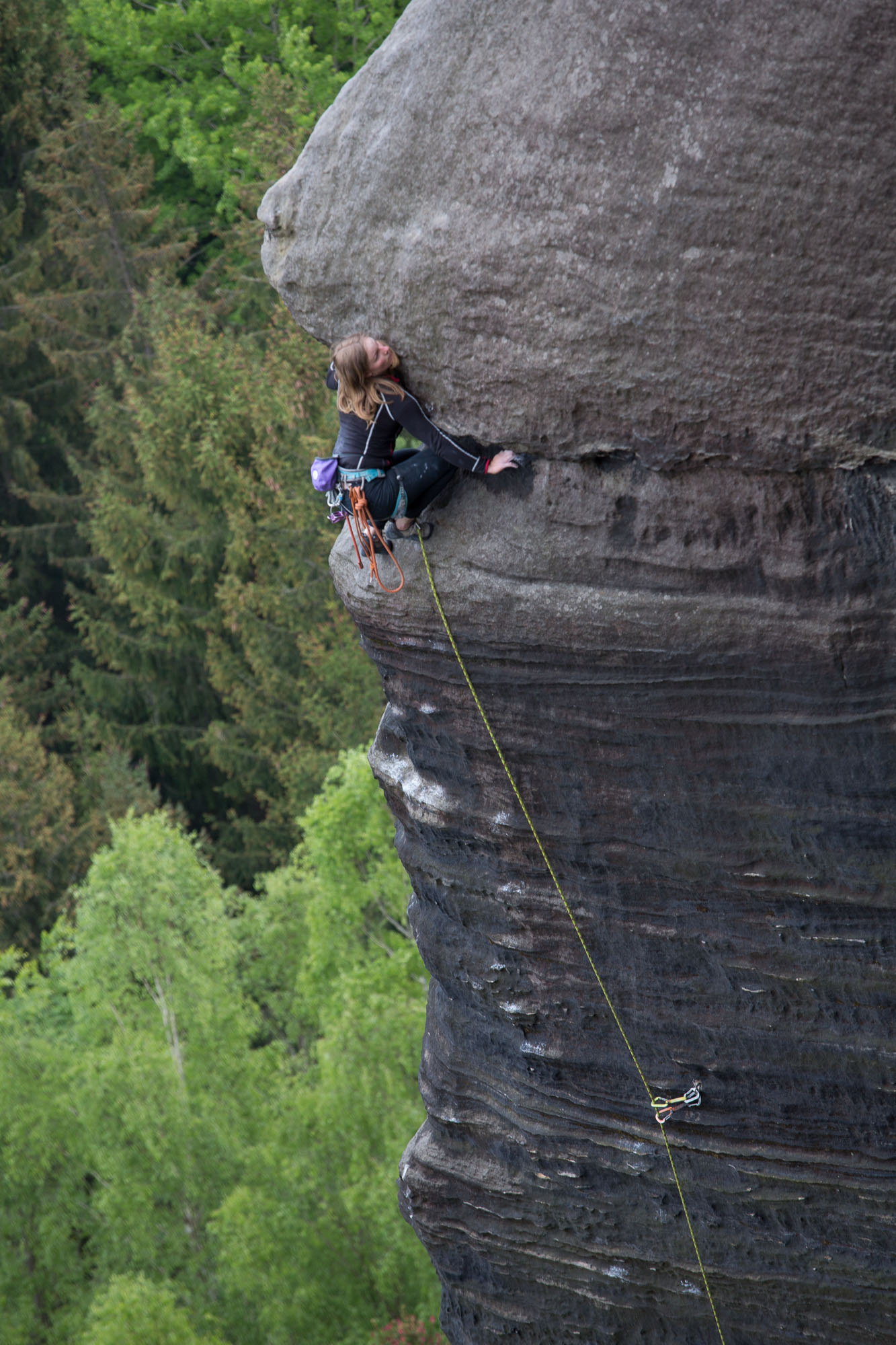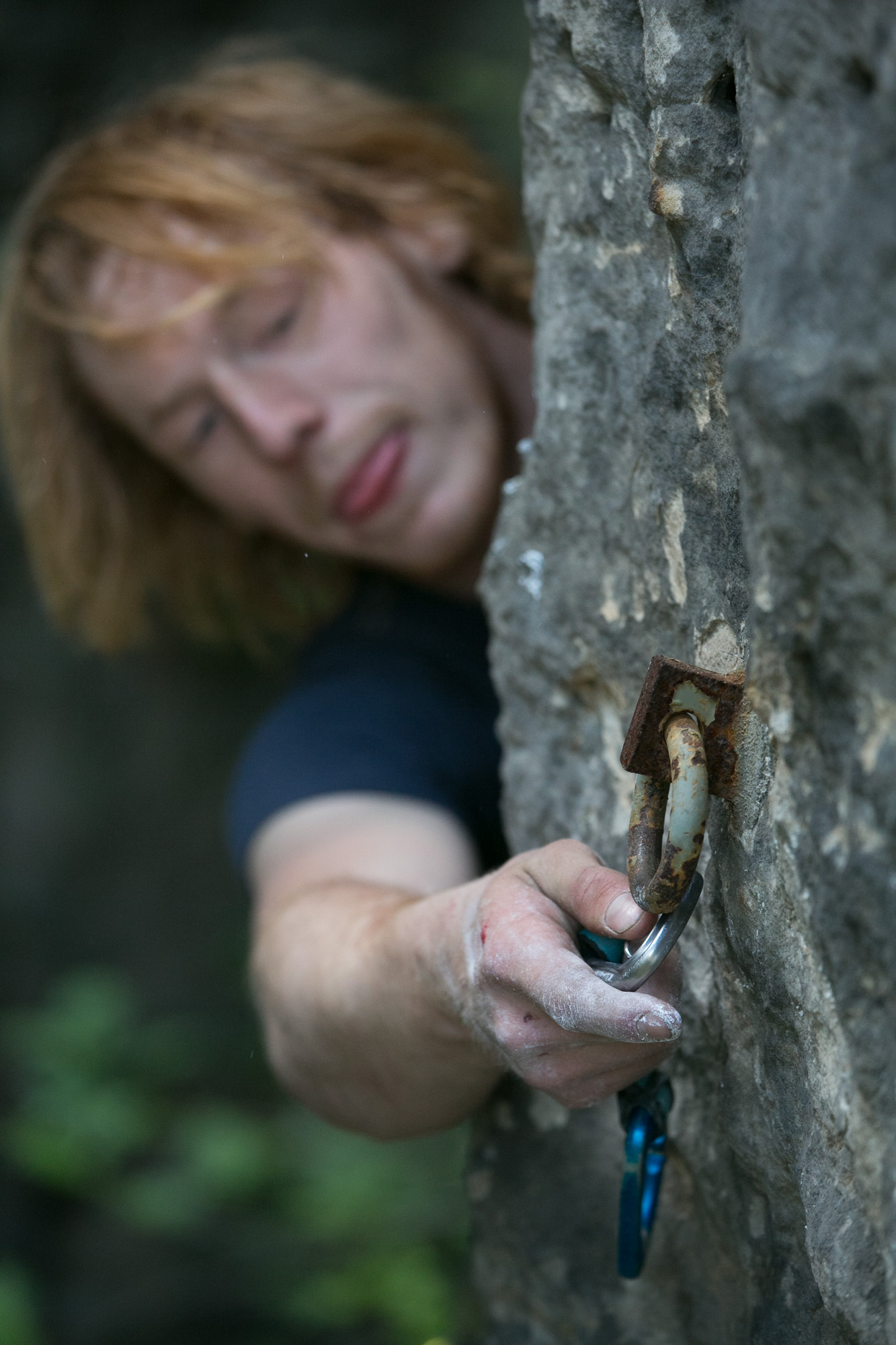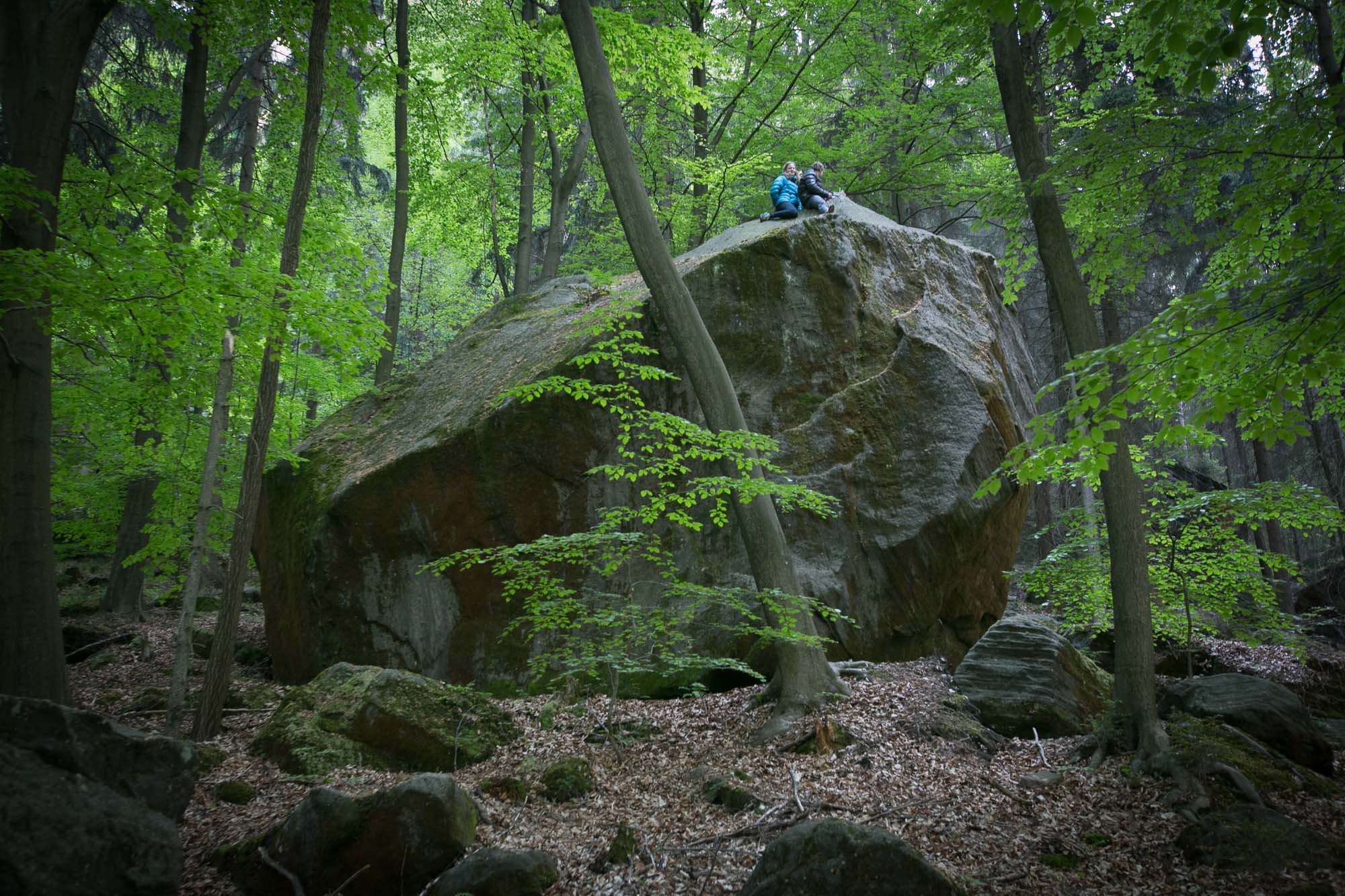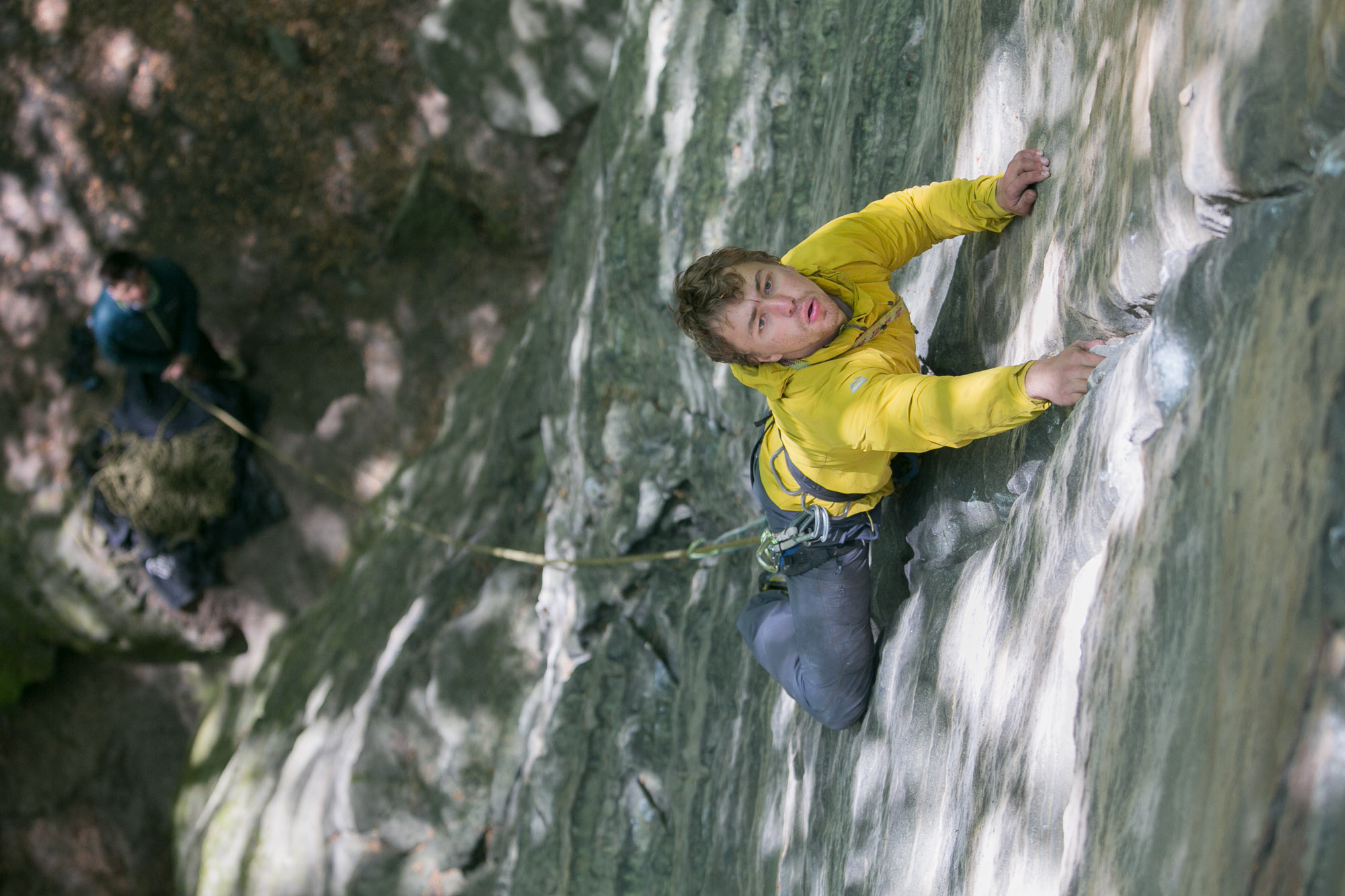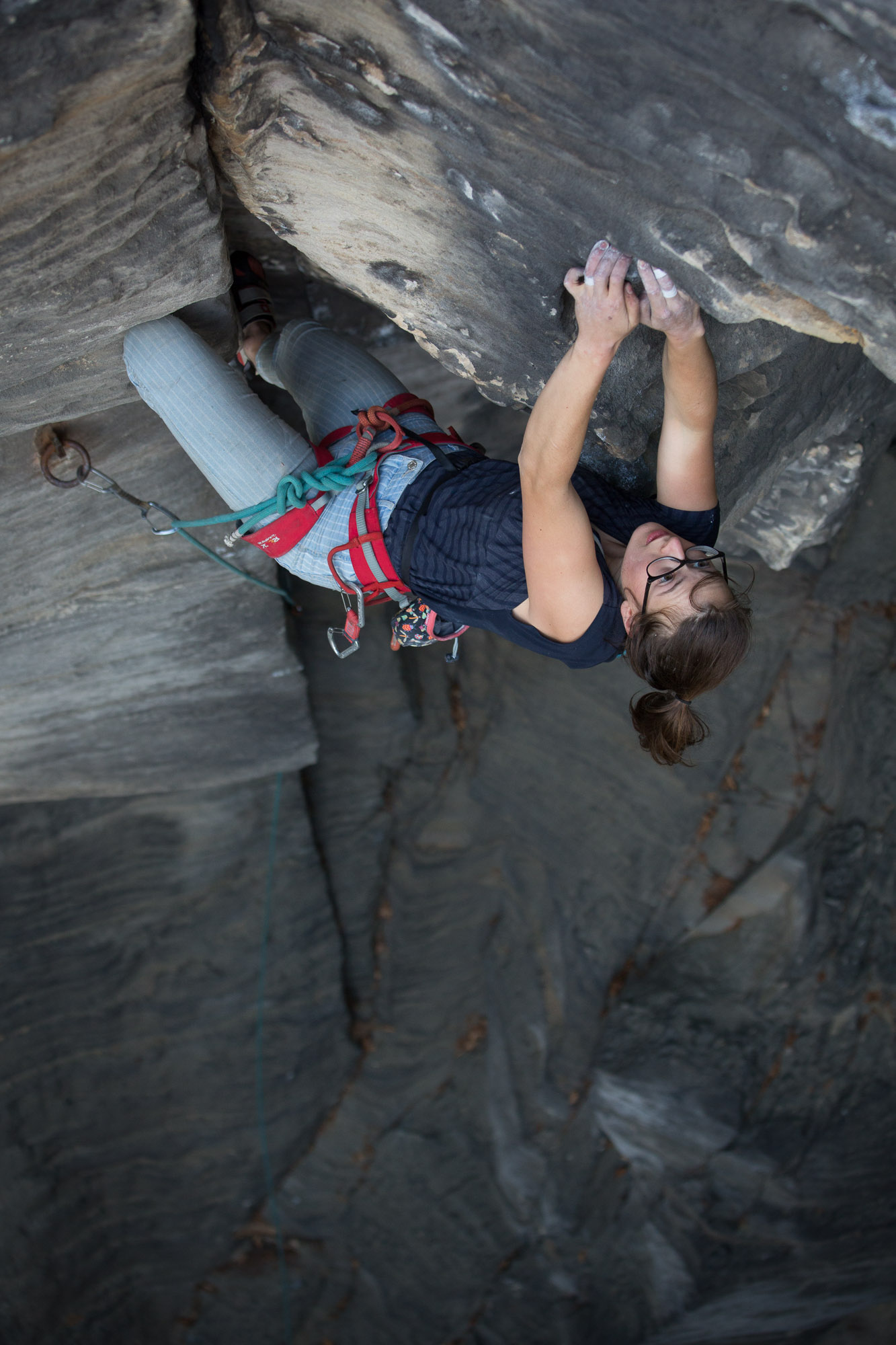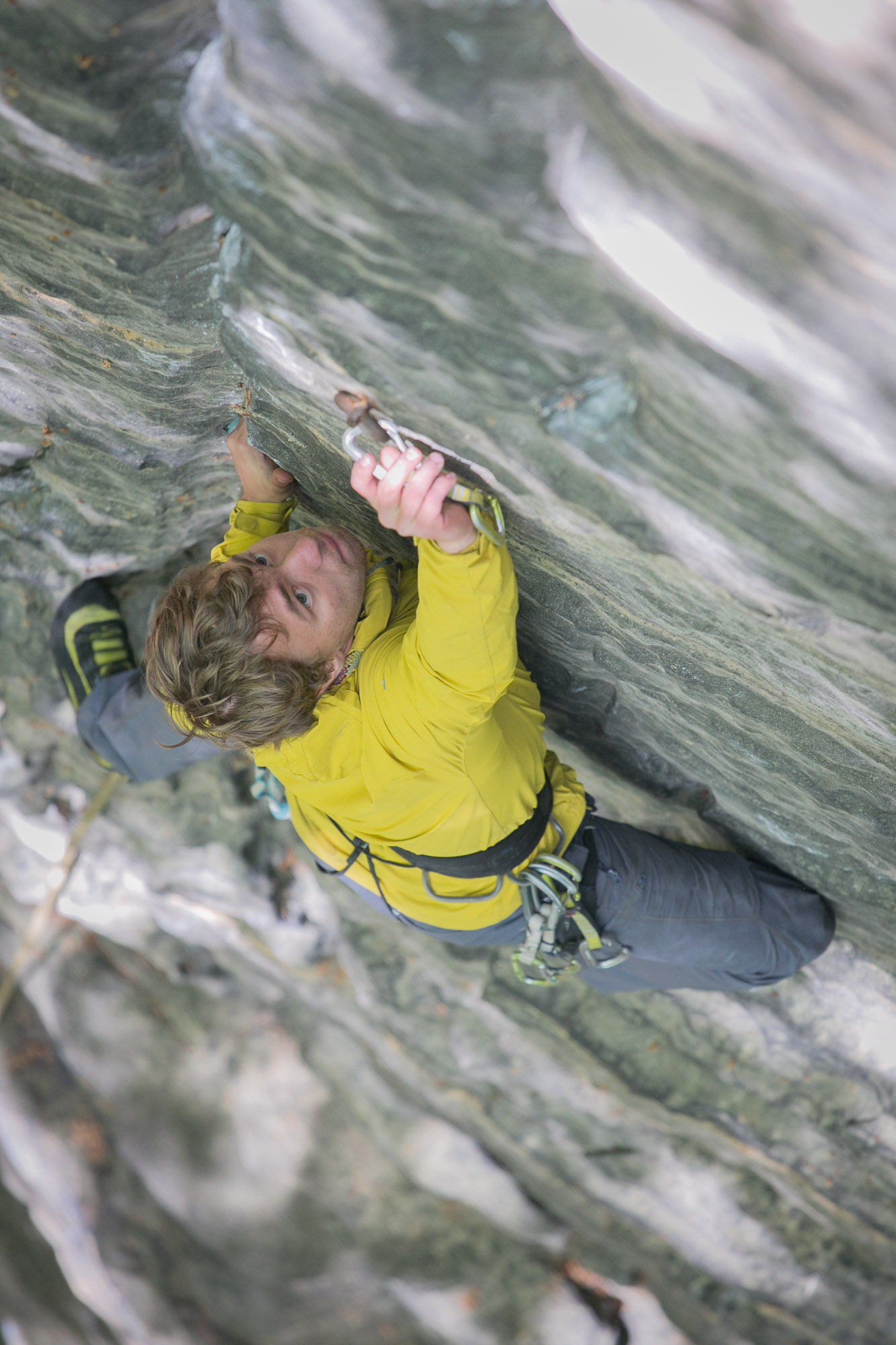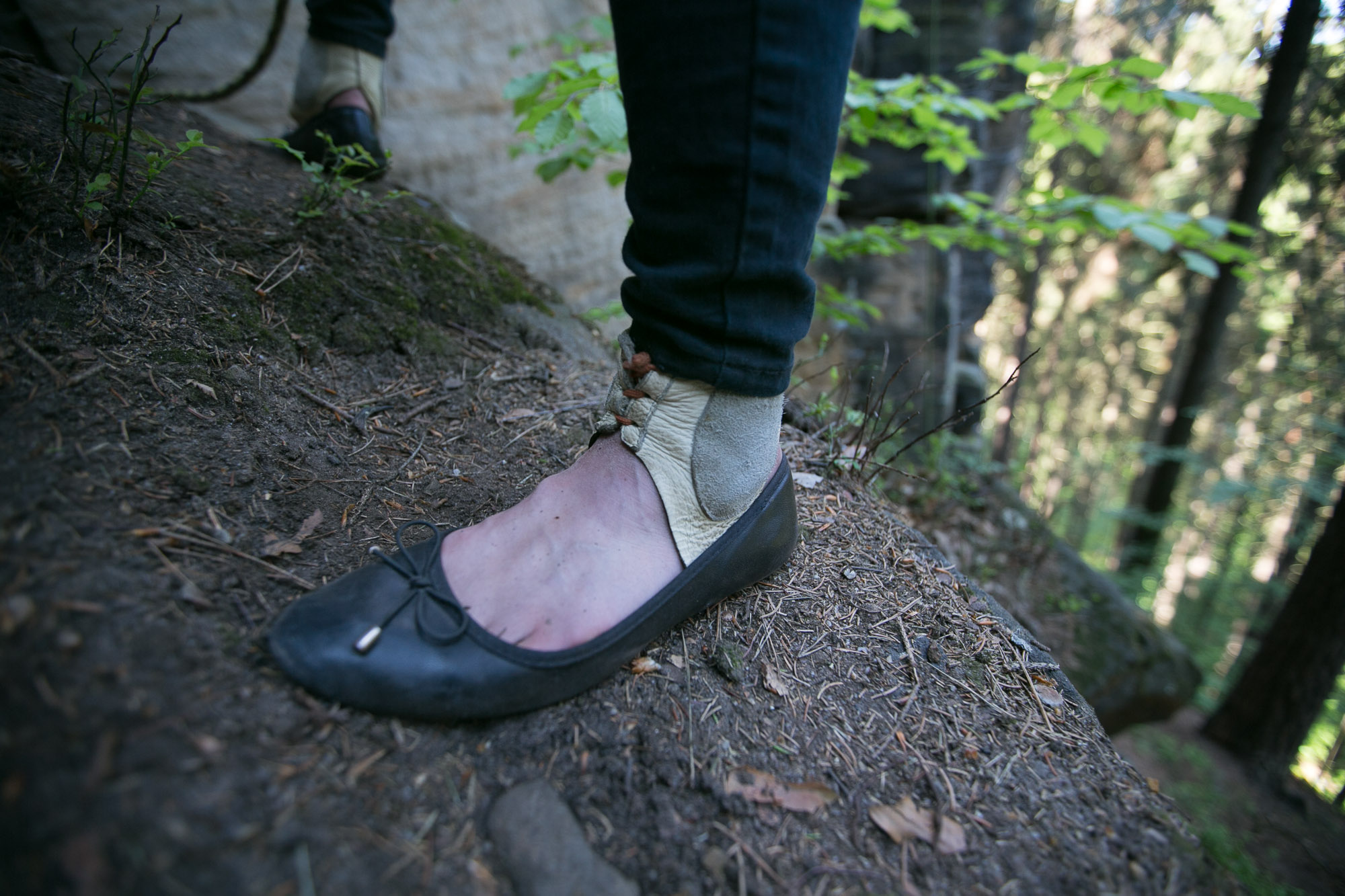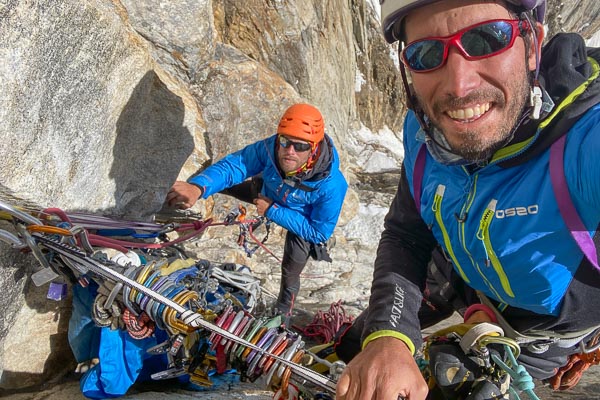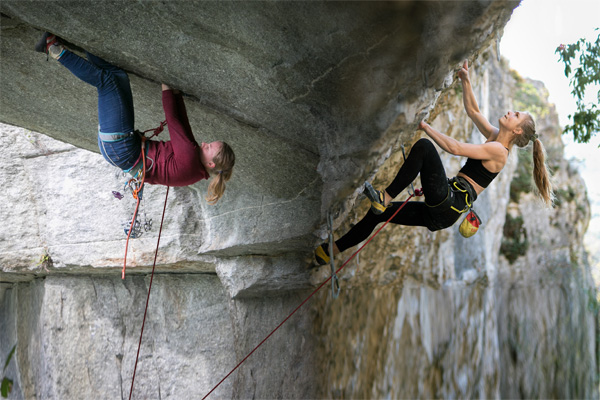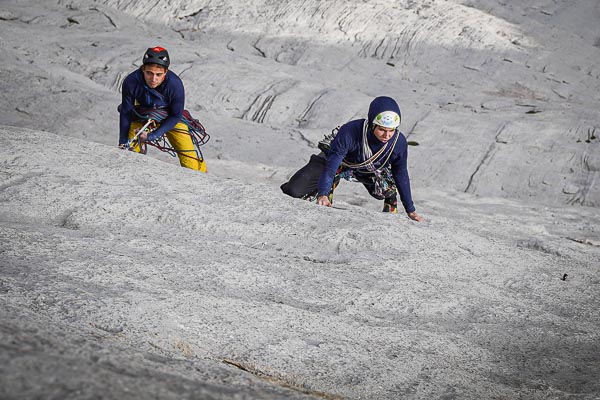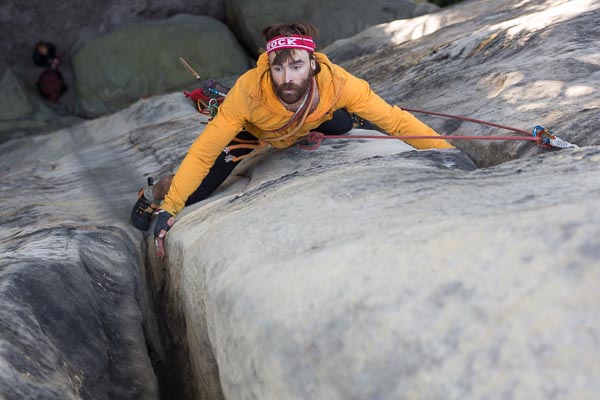FOUR CRACKS ON THE LEFT BANK
This rock trip reminded me of an era when sandstone walls and towers served as “training crags”. At that time, it was not possible to travel to the Alps, so top Czech climbers stayed home and were preparing themselves for the big walls on the local sandstone…
FELLOWS IN DANGER
Most climbers think that the “left bank of the Elbe Valley (Labak) is just about sport climbing and chalk.” However, the young alpinists united under The Czech Mountaineering Federation did not came here just to slap more chalk onto the already dusty crimps that unfortunately many people do not brush after climbing. Even the left bank (map) harbours some bold routes in which you need to use the same finesses as in the granite routes high up in the mountains – hand jams, body jams, biting finger jams, heel/toe technique, scraping your whole body inside offwidths… You’ll find your route here even if you like suffering in a crumbly filth (“Sametová spára” VIIb/5c fr. at Žlutá stěna žlebská).
Similarly to the real mountains, some of the local routes include rather delicate passages in which you can feel the air beneath you deep in your mind. The “relative altitude” from the last ring or fixed sling can be surprising to many of us.
The young mountaineers set out to try exactly these adventurous and often overlooked routes. This article tells a story about four of these routes. Each of them got its own little gallery, a large photo and a short but intense story.
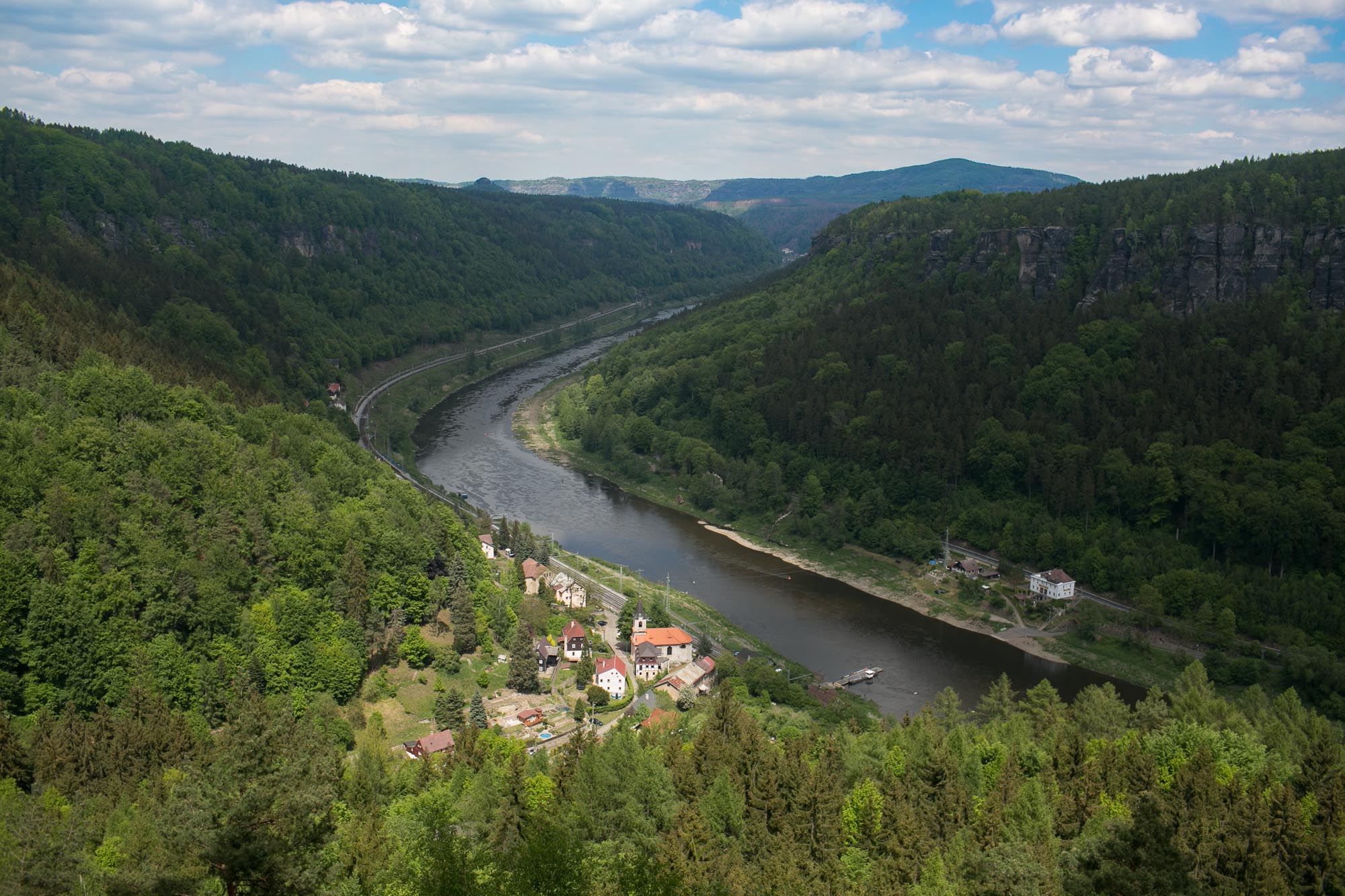
THE PUSHING GAZE
“Come on Bětka! There must be a solid hand jam just a bit higher!” shouts Šimon from below.
“Where exactly?” responds rather silent Bětka under the first ring of the “Fialová spára” (Purple Crack).
“Just a little higher. It’s more of a narrow hand jam. If you imagine the usual hand crack to be frog-sized, then this one would surely fit at least a salamander! Or simply a small frog,” shouts Šimon, a crack-lover, more of his rather clever advices at the girl fighting at the sharp end of the rope.
“You mean roe-sized?” mistakes Standa a roe for a tadpole while taking pictures from the fixed rope.
After a while, the funny moment turns to a rather dramatic scene, which all the spectators watch in complete silence. Everybody takes maximum care not to make any sudden noise. Several pairs of eyes are pushing Bětka to the first ring. She’s going slow. A few moves up and then back down again. She shakes off her pumped hands. We all know that Bětka is a tough climber and would not lose her grip easily but it’s not easy to watch her struggle in the no-fall zone.
Clipped.
The young mountaineers did not get bored in the Elbe valley. Not even on their rest day when they imbibed – occasionally beer but most importantly methodical knowledge straight from the Czech “Lord of Bigwalls” (Ondra Beneš) and formed a courageous Fellowship of the Bigwalls around him.
By the way, the “salamander crack size” quickly became a term. Let’s wait for the summer season – it might even spread to Adršpach and “officially” enter the Czech climbing lexicon.
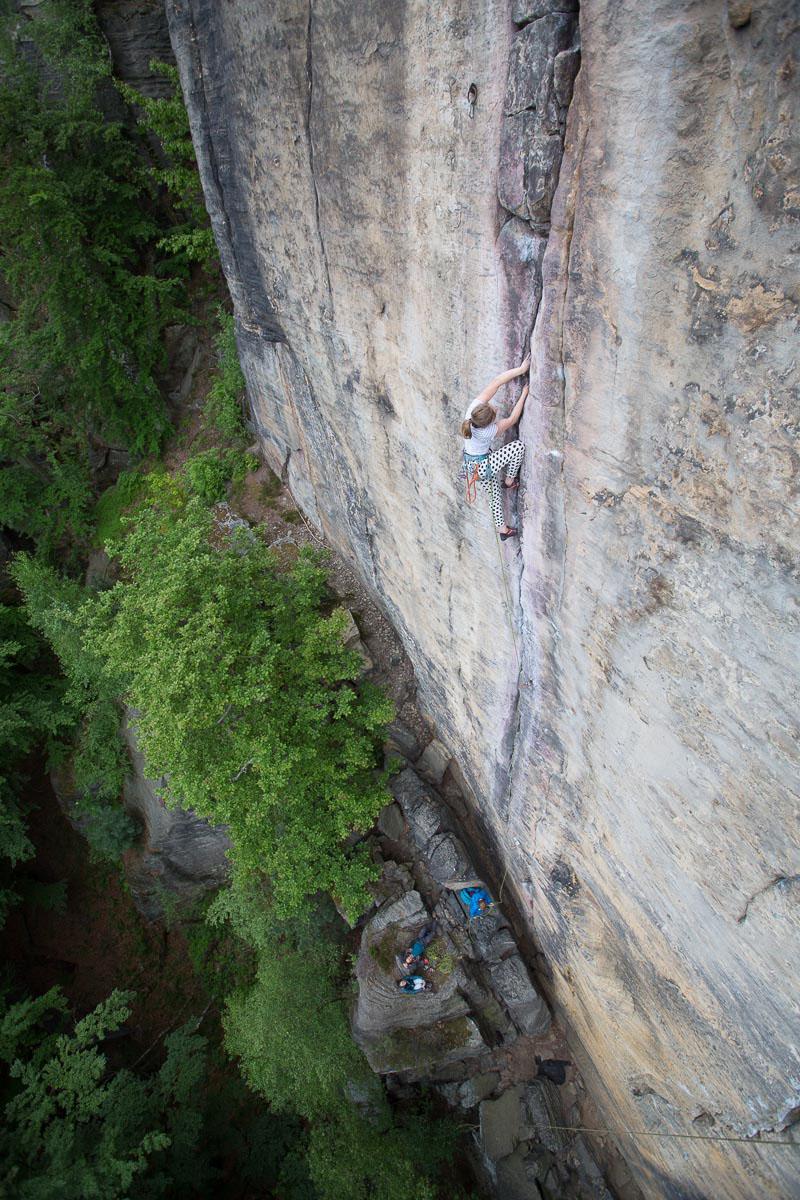
FIALOVÁ SPÁRA VIIIc (6c+)
Žlutá Stěna Žlebská crag | Krauskopf, Höfer, 1992
(Written and climbed by Eliška “Bětka” Vlčková)
Beautiful and difficult crack. The route starts off with a supposedly great hand-crack which can be easily protected with slings – Šimon and Anča ran up that part smoothly in a few seconds. I need some more crack training hours in Adršpach to be able to climb that passage so quickly.
Once you clip the first ring though, the good hand jams disappear and the crack narrows down to a finger size. Sometimes there’s a good resting jug on the right side and some footholds as well – that helps a lot as you don’t have to jam your feet into the narrow crack all the time.
I tried climbing a finger-jam once and I don’t remember exactly enjoying it. So after I struggled and slipped even through the initial part of the crack, I was not so happy to see it narrowing down. With doubts, I tried jamming the fingers into the narrow crack and to my surprise, they held well, and it was actually a great climb! As Ondra Beneš said: “Classic Indian Creek line.”
After a few whippers, one last-second grabbing of a fixed loop from which I managed to place an UFO soft protection, and some intense breathing in the upper part (people usually climb this route only up to the second ring), I surprisingly finished the route! Next time, I would like to make the climb less of an expedition and do it at one go. I’m looking forwards to it!
If you love cracks and you ever find yourself browsing through the routes on the left bank of the Elbe valley, don’t miss this route. It’s not so hard to find. As the name suggests, it’s distinctively purple.
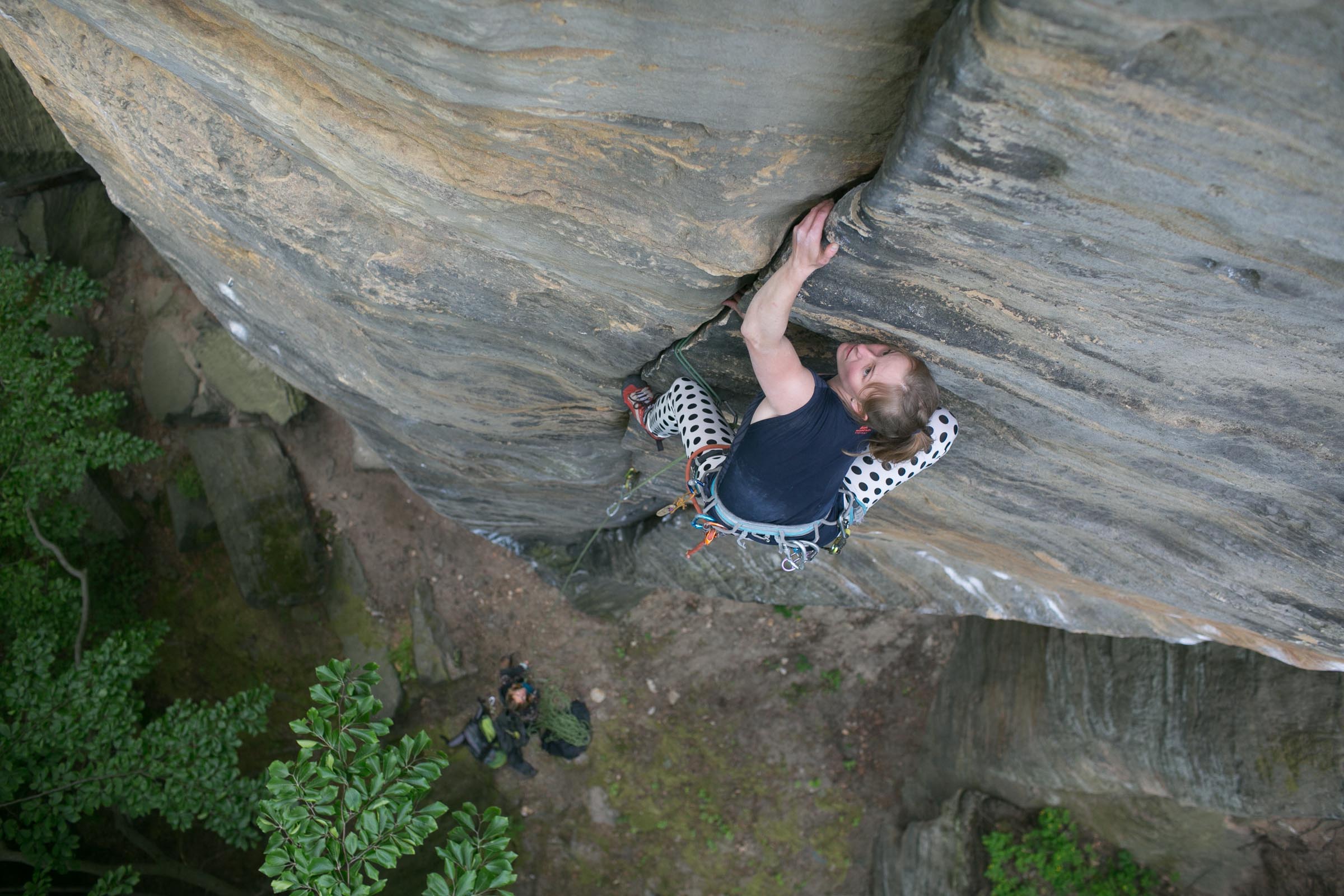
BUBLIFUK VIIIa (6b+)
Žlutá Stěna Žlebská crag | Krauskopf, Hovorka, 1987
(Written and climbed by Anička Šebestíková + Dan Podráský)
This route is well-hidden behind the corner of Žlutá Stěna crag but it still caught our attention. “We need to climb this one!” Slightly overhanging wall is intersected by a perfect sidecrack crowned by a single ring at its top. That’s all you need to know. It is exactly the type of the route where you do care neither about grade, protection, nor length. It’s so tempting that you would climb it anyway – no matter whether it is grade five or ten. Nothing you hear about that route can make you resist the temptation. It’s that route that gives you the amazing feeling of guaranteed adventure. You already know you will convince all your climbing mates to join you and send it as well.
At first, they would reassure you: “Well, I can belay you but I’m not climbing it.” But soon enough the line just changes their mind and they join you. That’s the best part! Sometimes, my climbing mates and I agree in this way even about really ugly routes.
This is a fine example of 1987 route graded VIIIa/6a+ fr., even marked with a star that is reserved only for the best routes in the area. It’s a bold and challenging line, surrounded by an aura of authority. It has got quite quirky name as well: “Bublifuk”, in English “The Bubble Blower”. It’s certainly not a sport route – you can find those all around. In contrast to them, this one is not just about crimps but about some amazing crack moves as well. You won’t find any bolts here, only the oldschool rings. There’s not even many of those – just three. And of course, you’ll need to place some knots and slings for protection.
“I hope there are no funny moves up there where I cannot see yet,” you think to yourself, trying to place the first thin knot into the crack. It turns out to be a perfect bold crack climb that involves some trad moves and even offers some decent spots for the knots. After few meters of climbing, you realise that some climbers would surely stick all of their limbs into the crack but you enjoy using some of those tiny and crumbly footholds in the walls around as well. The passage above the first rings seems to be a bit blank at first but then you make your way through and there you are, clipping into the second one. Finally, the adventurous part that wasn’t visible from the ground. You feel that the whole point of the route is just above you.
So you check the belayer. Fine, at least he’s paying attention – there are some guys that would be already sitting and giving you unsolicited advice. The following crux includes some vague and hard to read moves in the slab under the third ring. The onsight is almost within your reach. There are no chalk marks to guide you, though. The only way to find footholds is to look for gaps in the layer of lichen. You step on those carefully, and run your hands across the smooth rock to find at least some tiny edges to hold on to. A few moments of doubts and an obligatory check of the knot on your rope. You do the move and reach into the tiny crack. All it takes is to find the right track through the lichen. It wasn’t that bad, you think, after you finish the easy final wall. “Actually, it was very nice!” The clipped anchor works wonders! In the end, the hardest point was to get back to the ground. We though that our rope was long enough… it wasn’t.
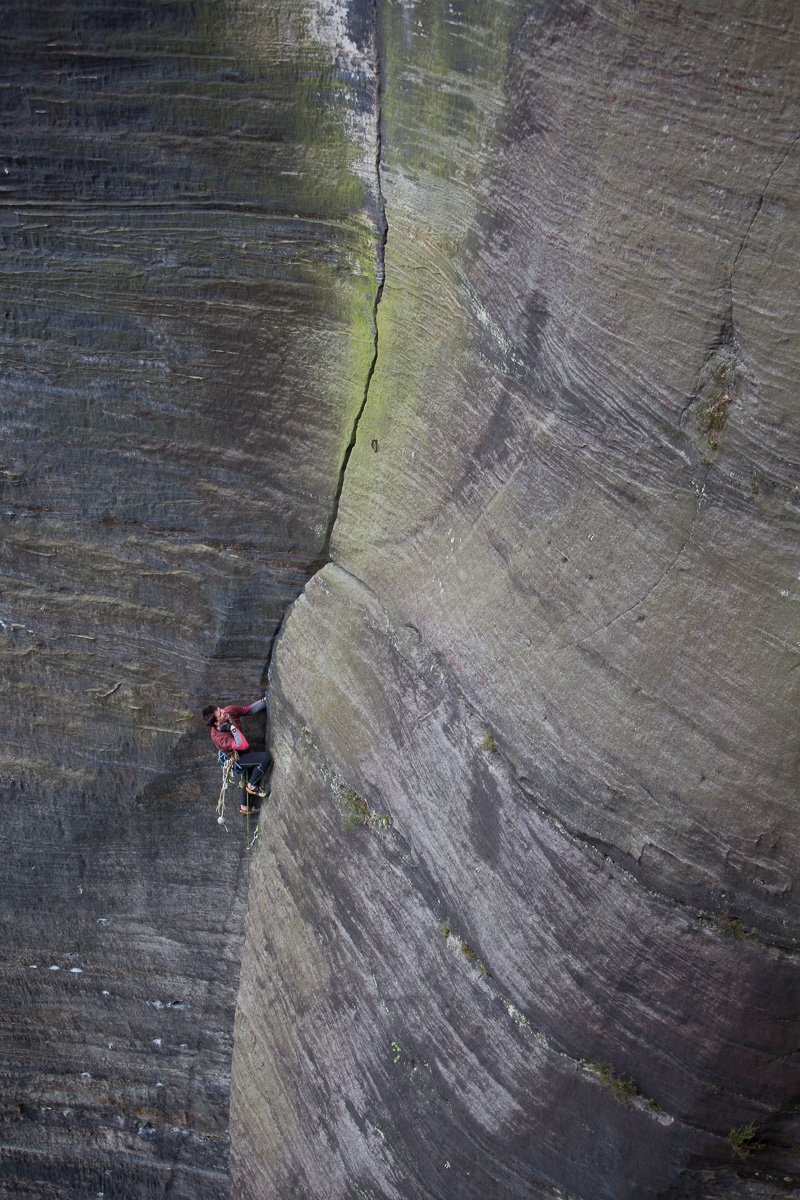
CESTA NÁMOŘNÍ PĚCHOTY VIIc (6b)
Indiánka crag | bratři Weingartlové, 1978
(Written and climbed by Lukáš Ondrášek)
And what about us from the East? Sandstone is almost a swearword where I’m from – it’s way too risky to even mention it. Moreover, who trust the shoelaces that sandstone climbers use as protection? We don’t even know how to properly place them. The above-mentioned classic route seems to climber like me, who grew up far from sandstone towers, as an utterly different world. I flip through a thick guidebook and realise that I cannot avoid climbing a crack now. I’ve heard about those routes in pubs and under the rocks; the later it gets, the more often the topic of crack routes comes up.
Not to look like a total rookie, I decided to check out some of those. One of them was the one on Indiánka tower. I had the route “Cesta Námořní Pěchoty” on my to-do list since the last visit, when we were climbing the slabs on the opposite side.
The brothers Weingartl who did the first ascent of the route are local legends and even from below, this greenish line with two rings looks as a real treat.
I hang a plethora of slings on my harness and start climbing up to the first crack. I thank god for the fixed loop and quickly clip it. What follows is a solid hand crack and then, some 20 meters above the ground, a first ring. I grind on, jamming my hands deep into the crack just as If I was searching for keys in a drain. It is getting harder, I’m trying to throw a large kinderkopf knot (a monkey fist) into the crack. Finally, I manage to jam a solid fist. “Crack addicts” would love this route and the final arete is just my cup of tea.
As I search for the anchor, I’m completely stunned by the views. “Is abseiling from the trees some sort of local tradition?” I’m searching for a ring, but somebody shouts at me that it’s five meters below me. The locals seem to cleverly place their anchors not on the tops of the crag but just a few meters below, into some cracks and corners. I belay Zbyšek, we chat for a while and enjoy the great quality of the local hard sandstone.
I suffered in the national lockdown for far too long – finally I find my peace here atop of a massive rock in the Elbe valley. Now I know that next time, I don’t have to go far south only to climb on some polished limestone rocks. Even this country offers world-quality lines and cracks that can take you from the depths all the way to the sky. Following the motto “fear only holds you back from enjoying your life”, we enjoy the Elbe valley to the fullest. So goodbye and see you at the Dóm crag next time. (Where Lukáš later fell in the last difficult move of “Kante Philosophy” Xc/7c+ fr.)
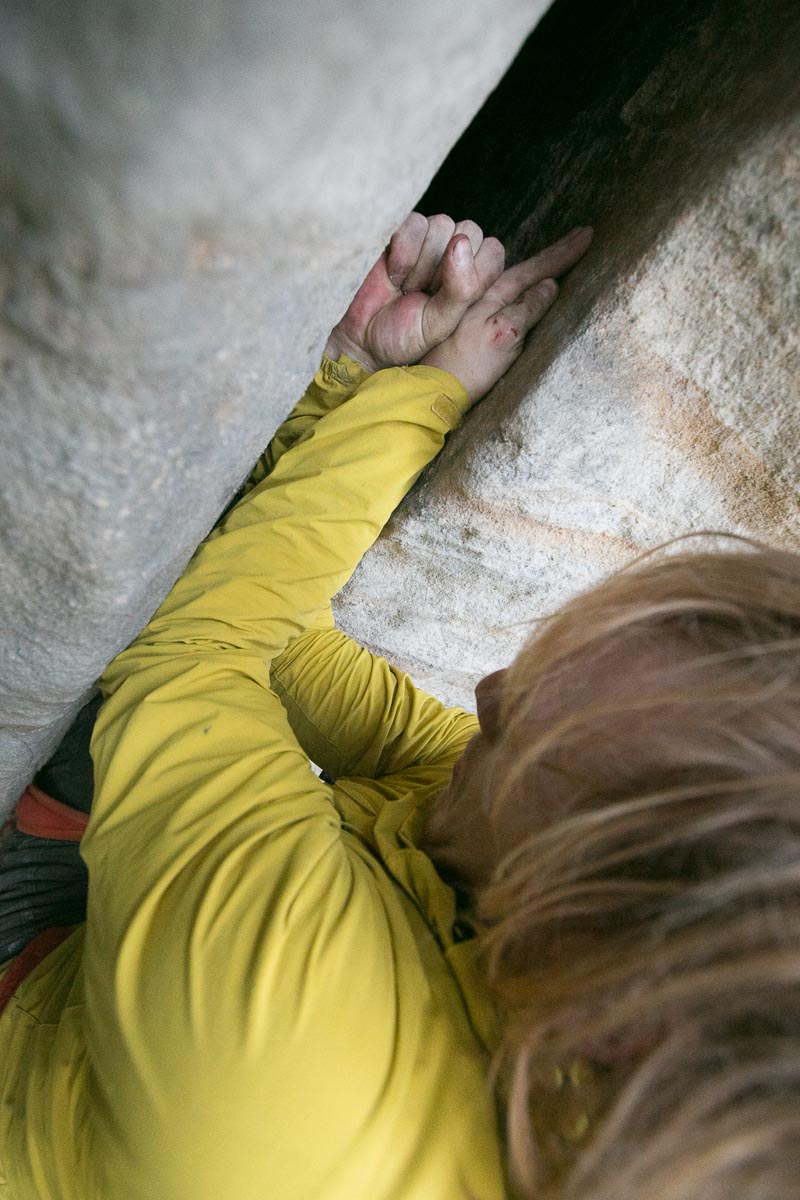
ADRŠPAŠSKÉ ORGIE VIIIb (6c)
Panic crag| Černý, Laštovička, Hochwalder, Litochleb, 2001
(Written and climbed by Šimon Janošec)
“Adršpach Orgies”. What should you expect from route with such a name? What sort of traps would you find there? Maybe a crack… wide, overhanging and bold. Or it could be a slab with long runouts that would make you feel dizzy only after a few moves.
Well, fantasy can be wild. As for me, I imagined a 20-meter long overhanging off-width crack, wide as a knee, with a ring placed high off the ground.
However, we are at the left bank of Elbe river – a place where off-widths, especially the bold ones, are extremely rare.
So, I won’t keep you any longer – if you expect bold climbing with almost no protection, this is not the route. It’s a ten-meter-long off-width crack with two rings. And then some final wall to finish.
But as the saying goes… Don’t judge a book by its cover…
Attention spoiler! If you want to onsight the route, skip the rest of the story.
The first impression of a well protected crack soon disappears. First, you need to make some brisk crack moves including a knee jam and double hand jam. Ten meters higher, you climb on a ledge feeling as if you have just finished your first marathon. And that’s still far from the anchor. Then you swing over the round overhang, check what comes next and climb on. The clean rock gets some lichen now. The final wall has some great holds – well, only if they were facing the right directions. You dance through the technical part and reach the anchor.
You clip in, wipe the sweat from your forehead, look around and think about the name of the route again:
“Adršpach orgies”?
Well, yeah, that fits…
TO THE MARROW
…and if you’re looking for some well protected routes that you can climb when you need to take a break from the bone-breaking part of our sport… When the young guys were taking break from the cracks, they managed to send RP of the following routes “Vodní Svět” Xa/7c, “Vysmátá Hrana” Xa/7c, “Yellowstone” IXb/7b, “Za Banku” IXa/7a, “Žaludeční Likér” IXa/7a etc. What still remains on their to-climb list are for example “Flyboy” IXb/7c or “Kante Philosophy” Xc/8a+.
__________

Sandstones, Mountains? Do not miss our new original article | Follow eMontana on facebook

